
BoilerJuice UX Case Study - Heating oil supply
Overview
BoilerJuice is the UK's leading heating oil supplier, providing a simple, efficient, and
cost-effective way for customers to order heating oil.
Established in 2004, BoilerJuice
revolutionised the industry by offering a price comparison service that allows users to find
the best local deals
on heating oil.
BoilerJuice, founded in 2004, revolutionised the heating oil market by offering a comparison
website that helped users save money by finding local,
cheaper prices and facilitating oil
deliveries. However, as demand grew, the traditional customer journey (relying on phone
orders and a basic online form)
became outdated and inefficient.
With its focus on customer satisfaction, BoilerJuice
has built a reputation for offering competitive prices, reliable delivery, and a seamless
online experience. The company operates through an extensive network of trusted heating oil
suppliers, ensuring that customers receive fast
and reliable delivery, no matter where they
are.
Due to their growing popularity and the seasonal surge in orders during winter, BoilerJuice faced
challenges in maintaining customer satisfaction.
A key issue was the lack of a fast, real-time heating oil level monitoring system. Customers often
discovered their tank levels were already
critically low by the time they placed an order, leaving them without heating, particularly in remote
locations such as countryside cottages.
On top of that, the ordering process was cumbersome.
Customers had to manually search for the best quote, place their order, and then call customer service to
confirm and receive delivery updates.
This not only placed significant strain on the customer service team and increased operational costs, but
also risked losing clients to competitors,
as many did not want to wait in lengthy call queues.
Customers also
had to physically check oil levels, which was inconvenient, especially during cold weather.
The lack of real-time updates and limited online interaction led to frustration, service
abandonment, and loss of potential customers.
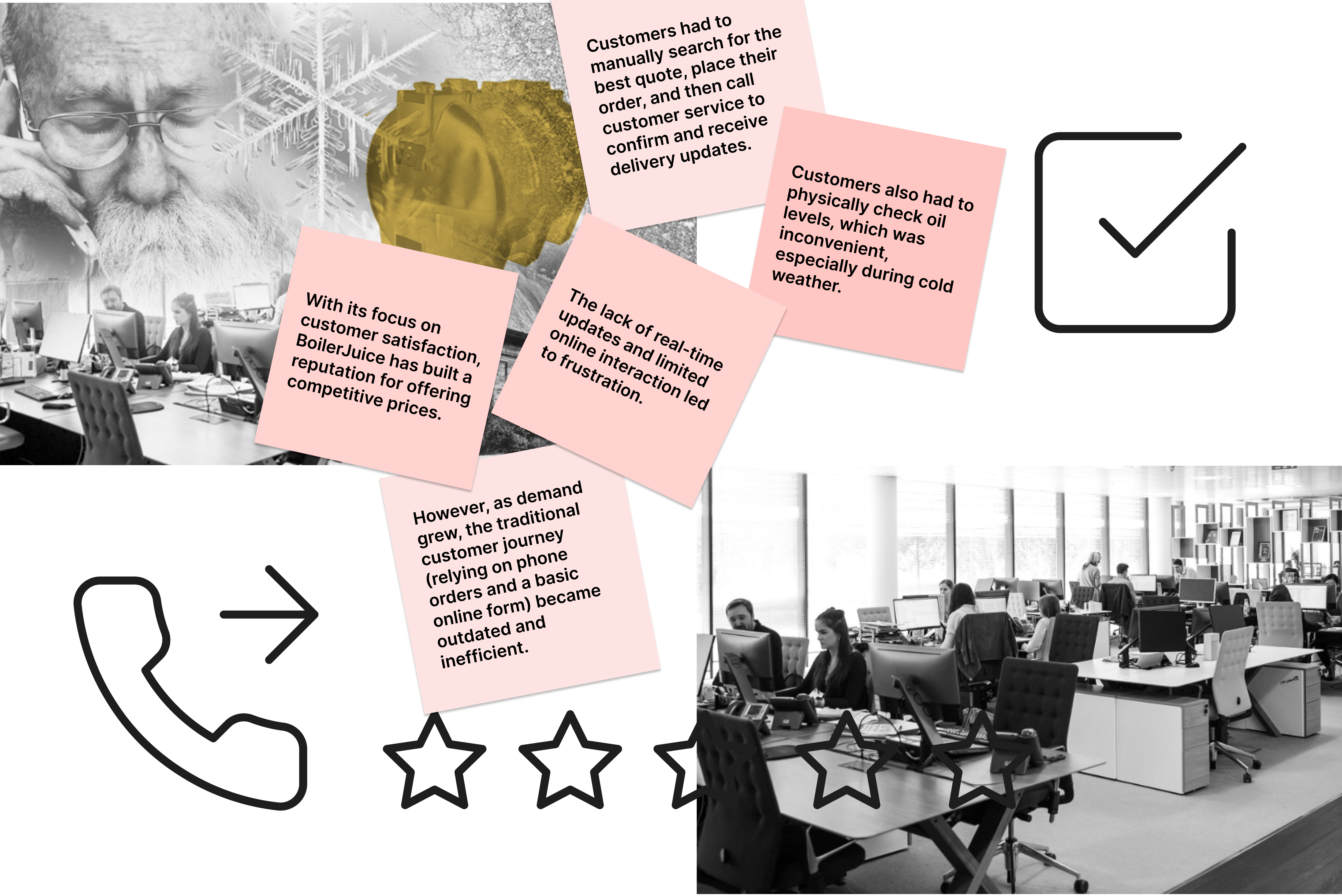
The challenge
Customers needed a fast, friction-free way to understand pricing and options and place a heating-oil order.
Many also had to go outside to read their tank gauges, unpleasant in winter and impractical for customers
with mobility constraints.
The existing website, calculator, and service showed the following issues:
Some of the pain points found:
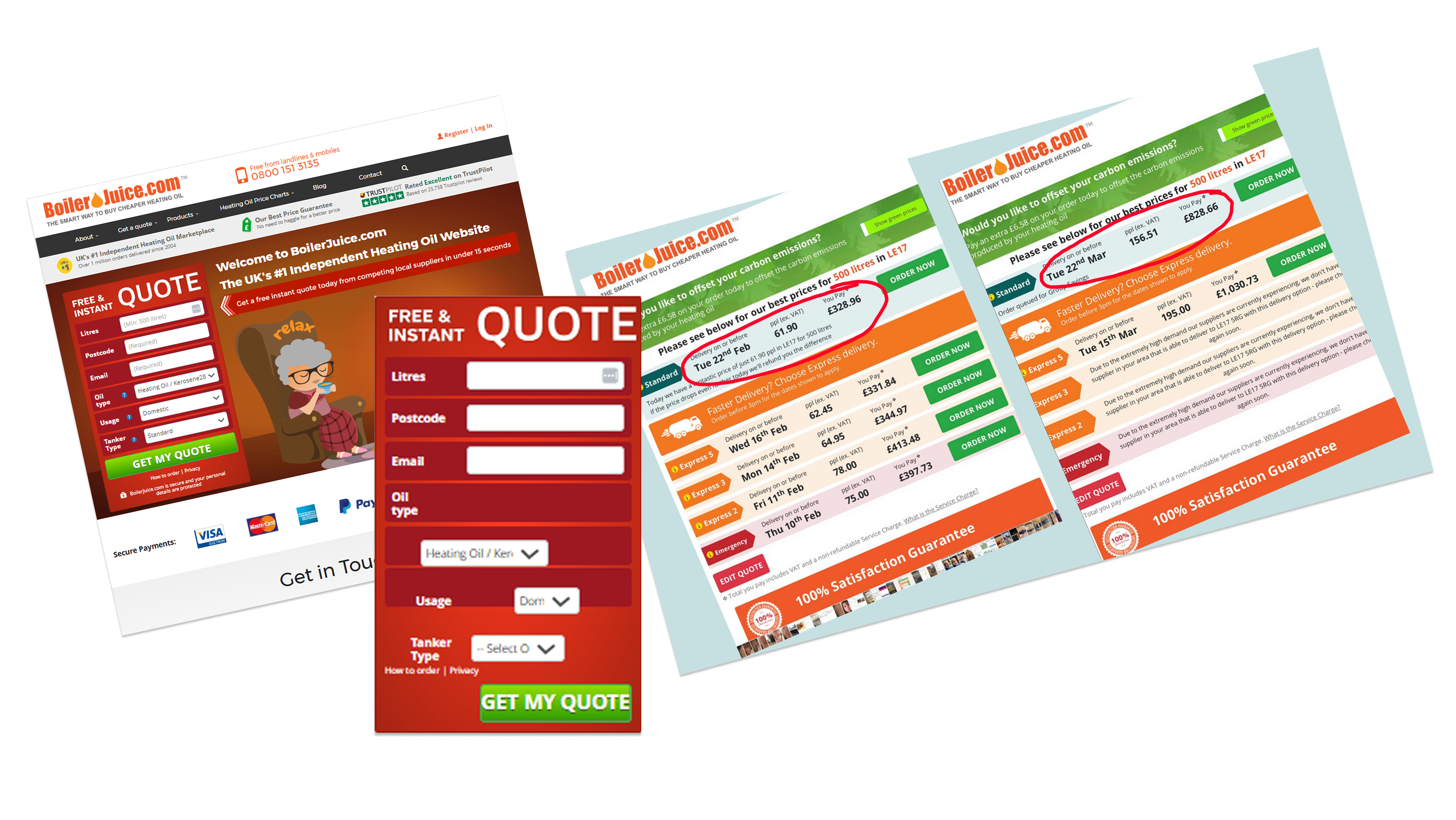
These issues led to an increase of support calls, abandoned orders, and lower trust in the platform.
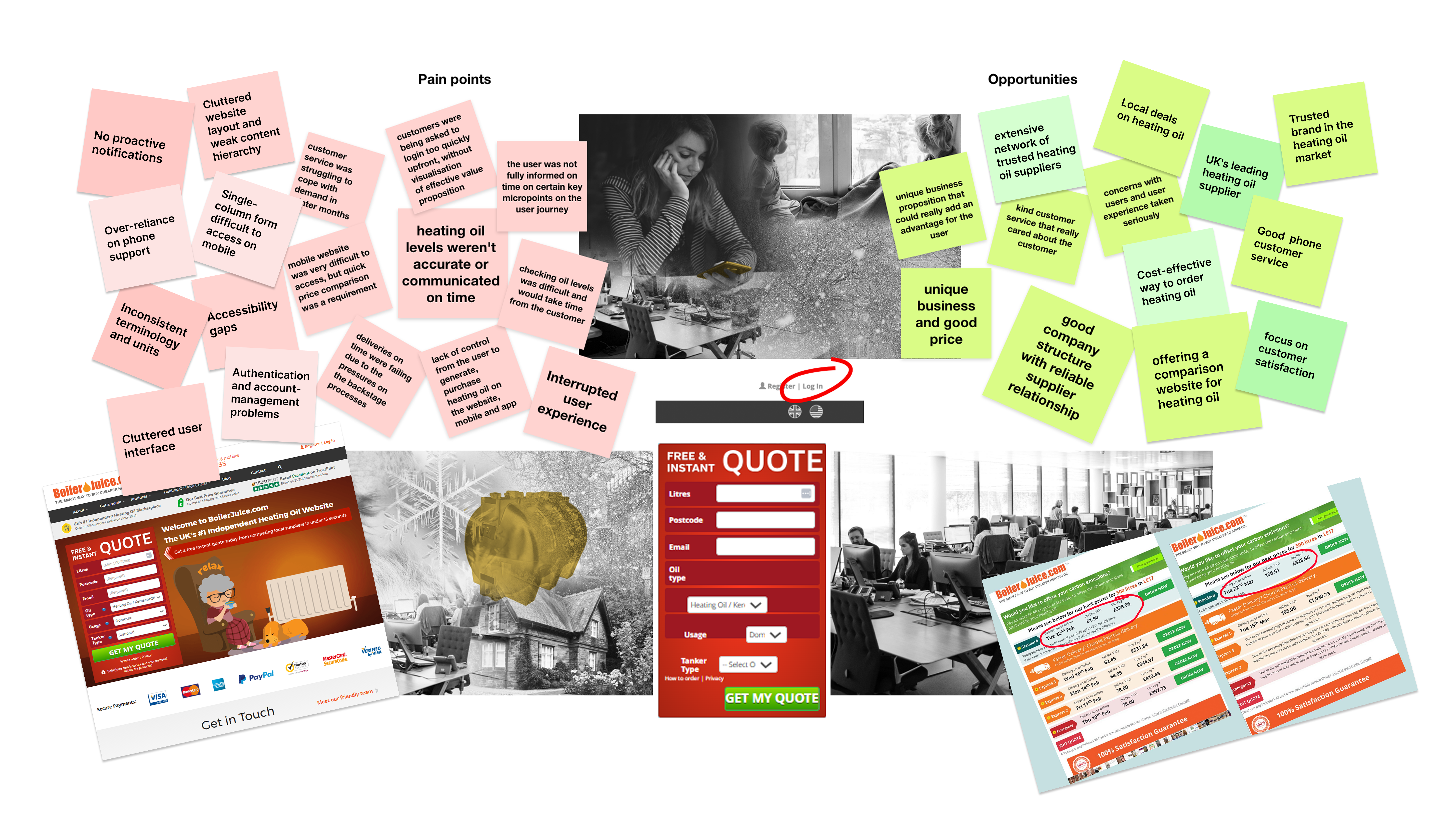
Source images: Arlington Research on Unsplash, Vitolda Klein on Unsplash, Kev Costello on Unsplash, Boilerjuice Ltd.
My role

Over ~18 months, I held ~80% UX ownership in a 300-person cross-functional team.
We used Confluence, Google Analytics, and optimised the web experience across Chrome, IE, Firefox, Opera,
and Safari.
The team included product owners, engineers, customer service specialists, heating oil partners, marketing
professionals, and developers,
altogether involving around 300 people. We collaborated using platforms such as Confluence and Google
Analytics, and designed for web
environments optimised for Chrome and Internet Explorer, while also ensuring compatibility with Firefox,
Opera, and Safari.
Designed and launched a new service that makes buying heating oil as effortless as being connected to a mains
supply.
This included creating new user journeys, redesigning legacy pages, and building fresh content for the
Connected Service
across the company’s public website (www.boilerjuice.com) and mobile app.
Some of my tasks:
and information architecture maps in collaboration with Engineers and the Product Owner.
Process & Approach
1 – Business research and discovery
- Organised a series of meetings and workshops with stakeholders, customer service teams, product managers,
and developers to understand both what was working well and what was not, as well as to gain clarity on the
new offering - the Connected Service. - During this process, I used sketches and the Lean Canvas framework to quickly capture current problems,
business goals, value propositions, and success metrics, with the aim of achieving a market-fit product. - Identified key user groups (including adults over 40 and stay-at-home parents) to map personas and capture diverse needs.
- Identified the key problems, opportunities, and challenges, focusing in particular on the main blockers
and customer pain points within the journey, as well as patterns in returning-user behaviour. - Assessed how the new Connected Service might compare with the competition, and whether it could deliver
advantages by meeting the underserved needs of users in the current market.
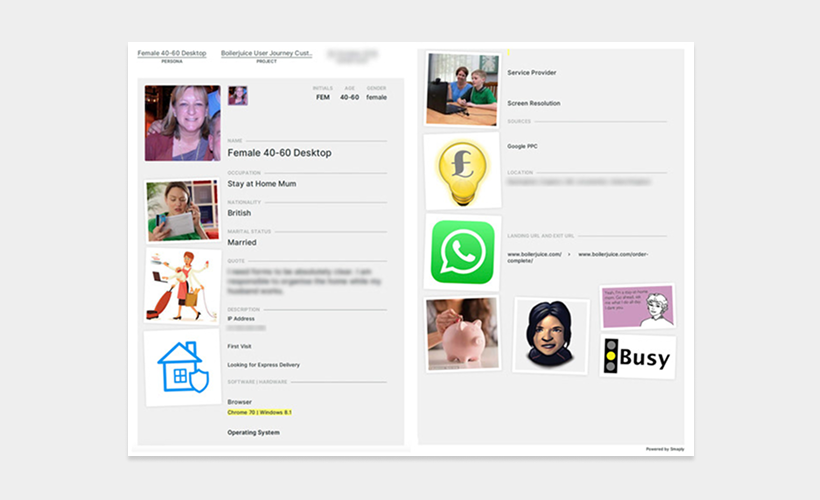
Personas created with Smaply.
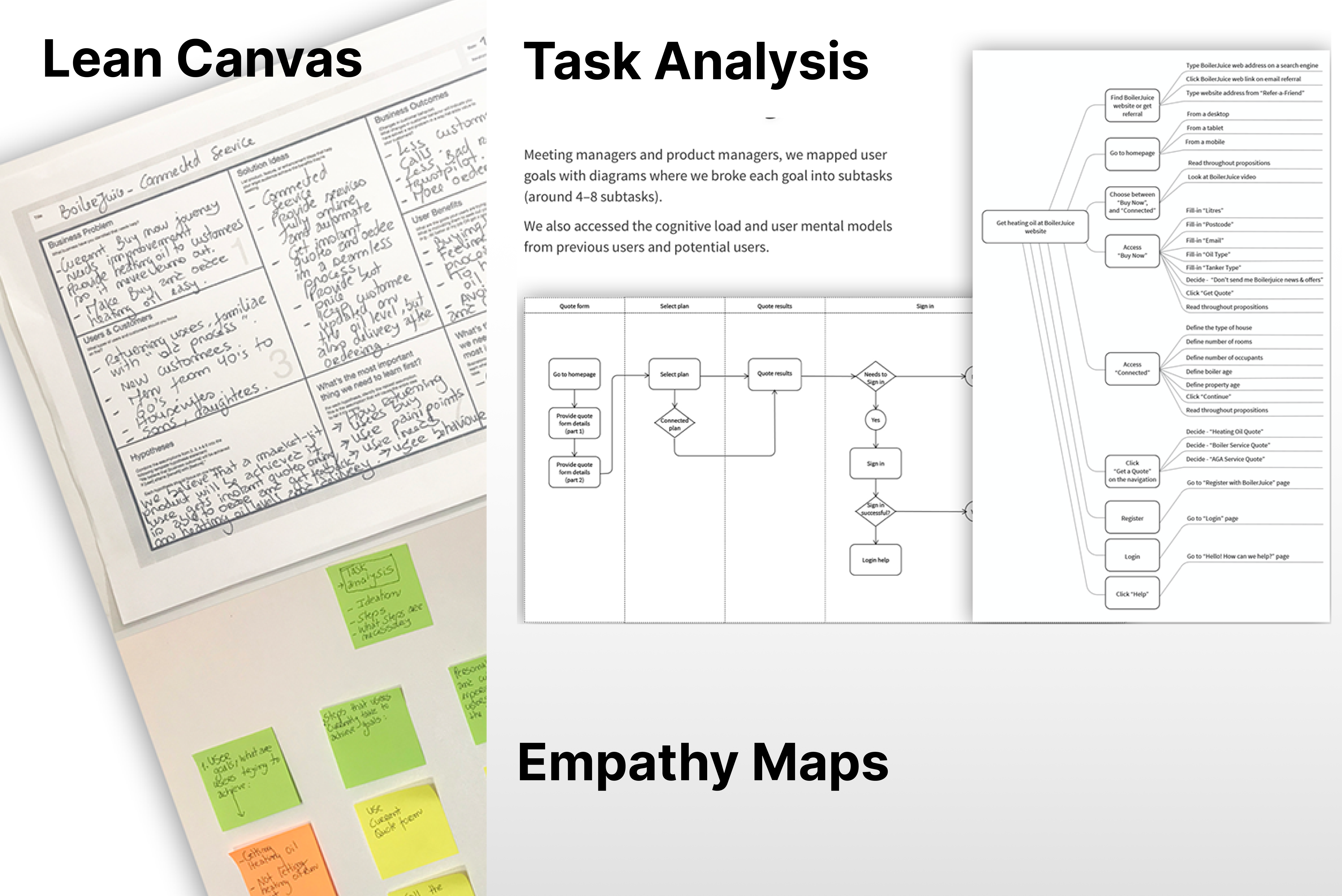
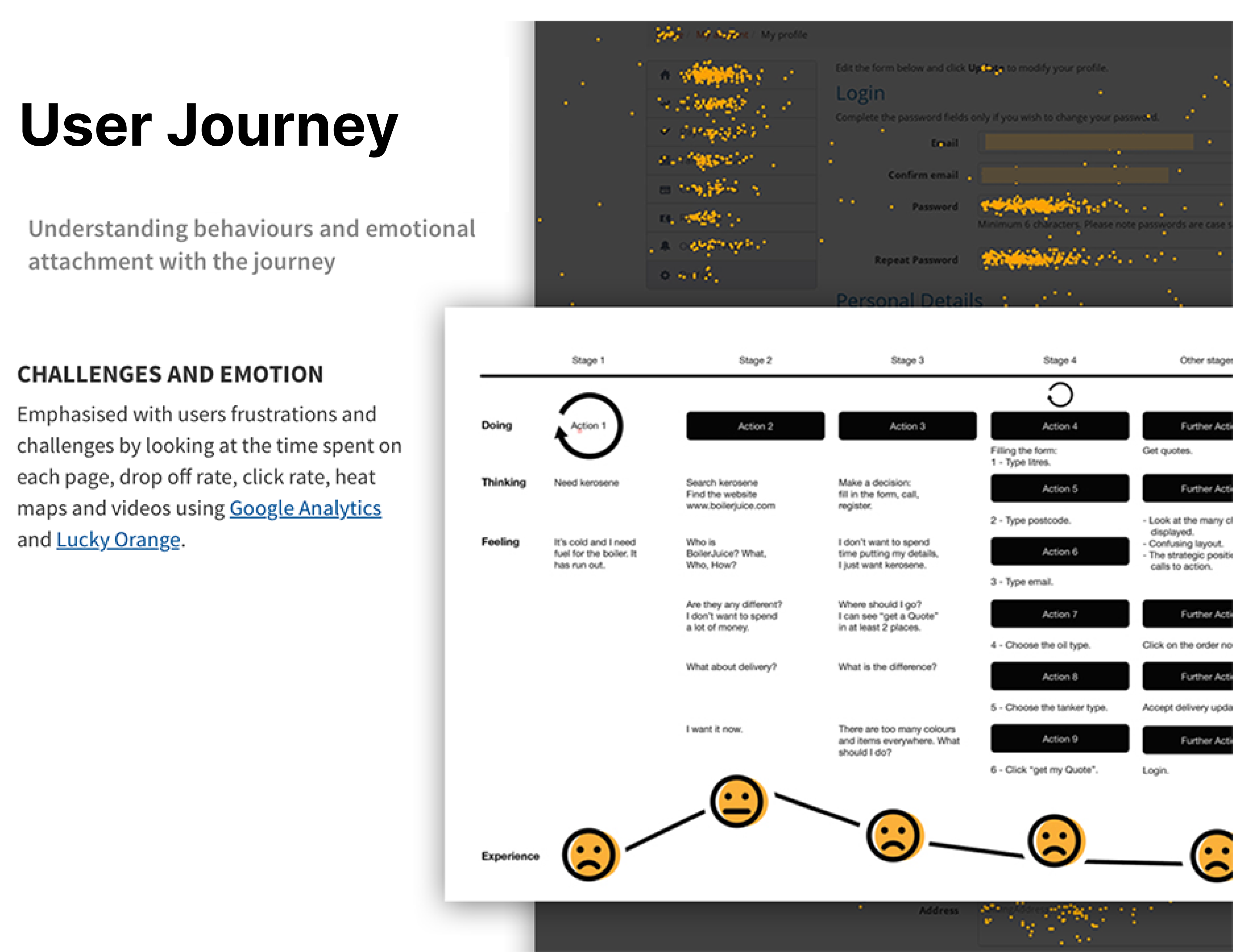
Tasks and deliverables produced during this phase:
- Held initial meetings with BoilerJuice stakeholders to gather their perspectives on potential problems and created a Lean Canvas to document and organise insights.
- Analysed customer feedback and support tickets to identify common pain points and recurring issues.
- Ran recurring in-depth interviews with at least 10 customers per week over several months, ensuring consistent feedback, ensuring representation from diverse UK regions including East Midlands, West Midlands, Yorkshire and Humber, North West, North East, Wales, Scotland, and Northern Ireland.
- Reviewed and extracted Google Analytics data to pinpoint drop-off points in the user experience, mapping them into detailed user flows and breaking the journey down into key micro-interactions.
- Created empathy maps to visualise user needs (pain points and opportunities), emotions, and behaviours at different stages of the journey.
- Benchmarked competitor experiences to identify best practices and gaps in the market.
- Mapped ecosystem diagrams to show how the product interacts with other systems and stakeholders.
- Conducted a comprehensive as-is audit of the current website, mobile experience, and app, supplemented by a detailed competitive analysis.
- Facilitated a stakeholder workshop to align on goals, define success criteria, and prioritise key problem areas for design and research focus.
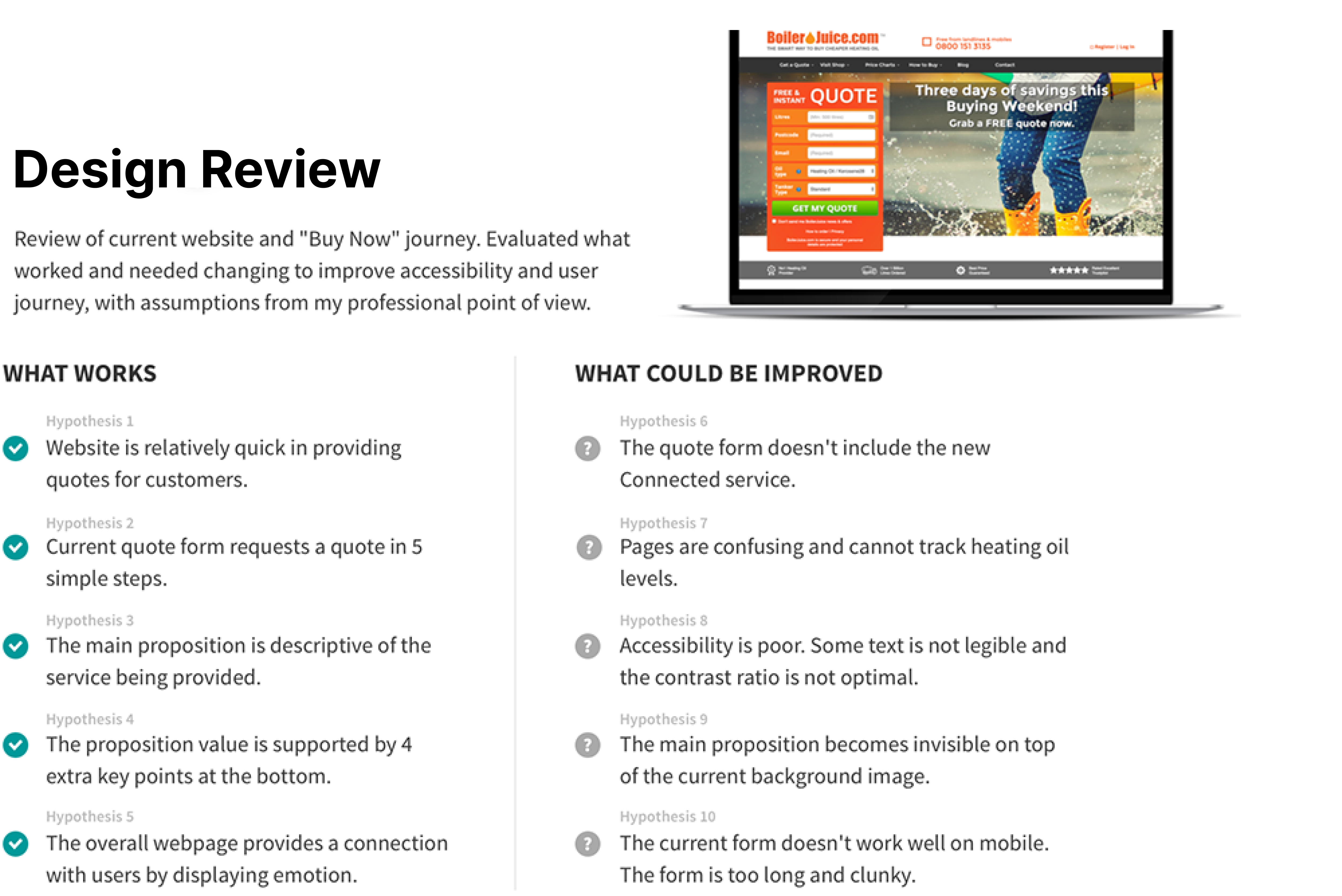
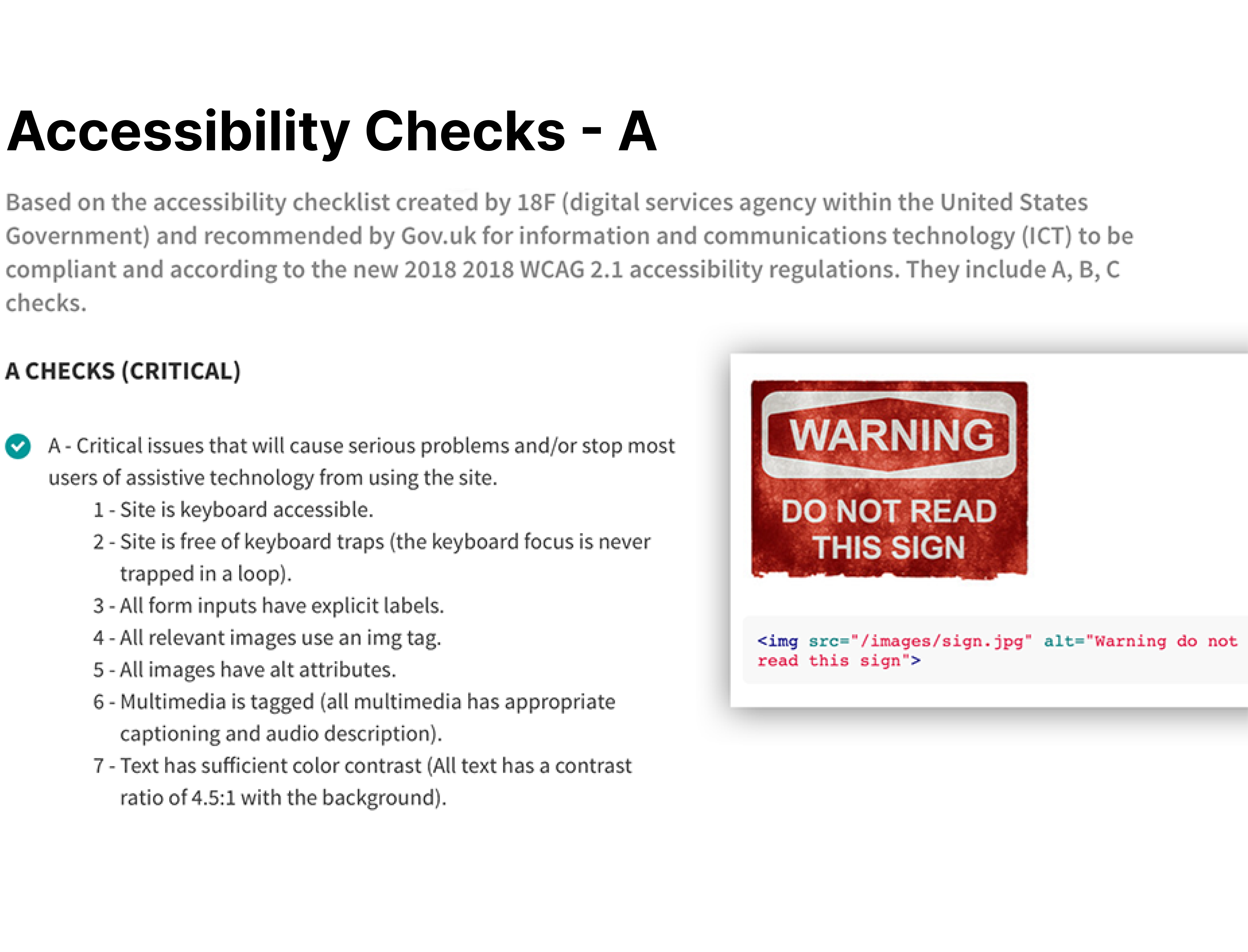
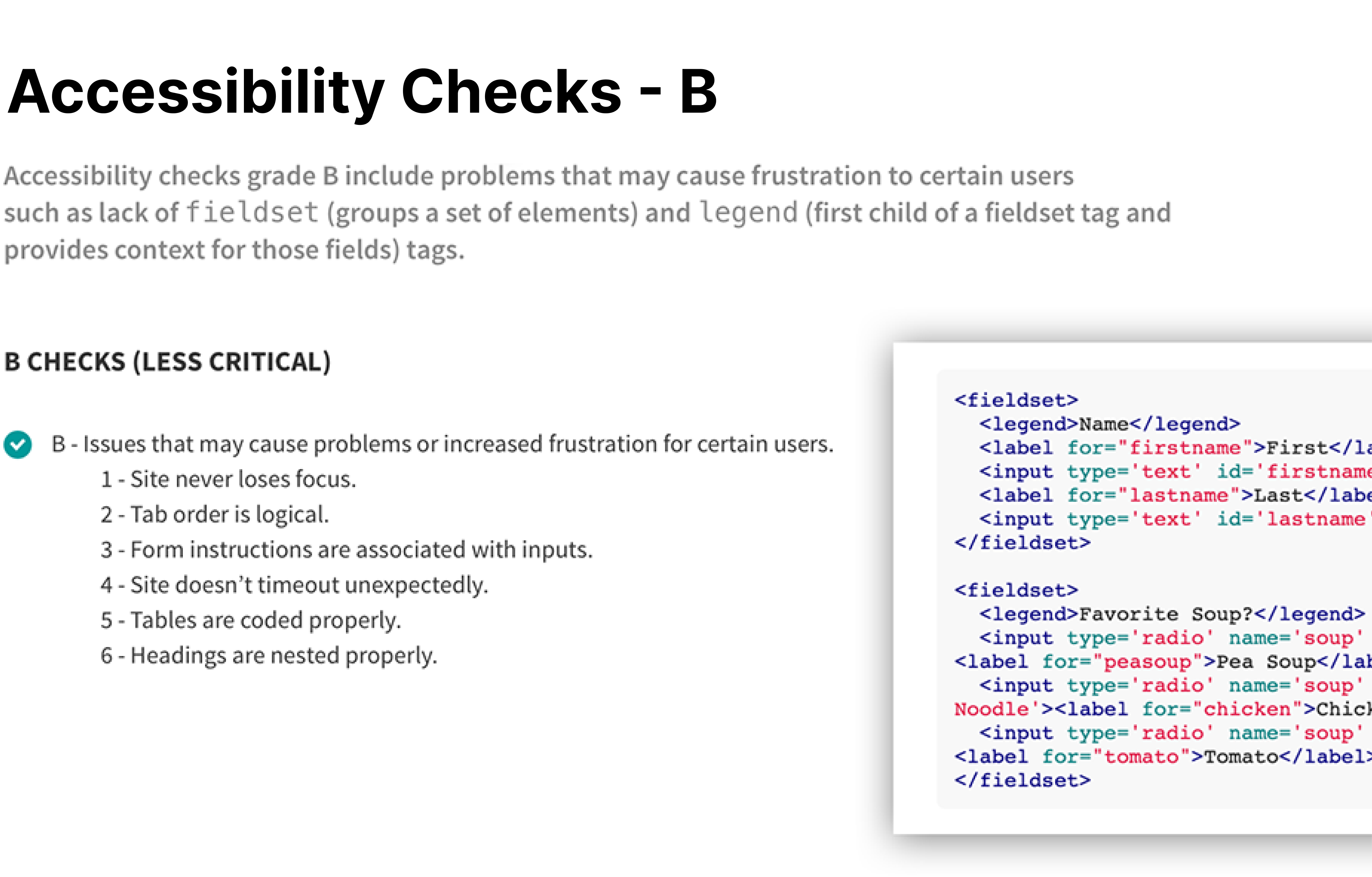
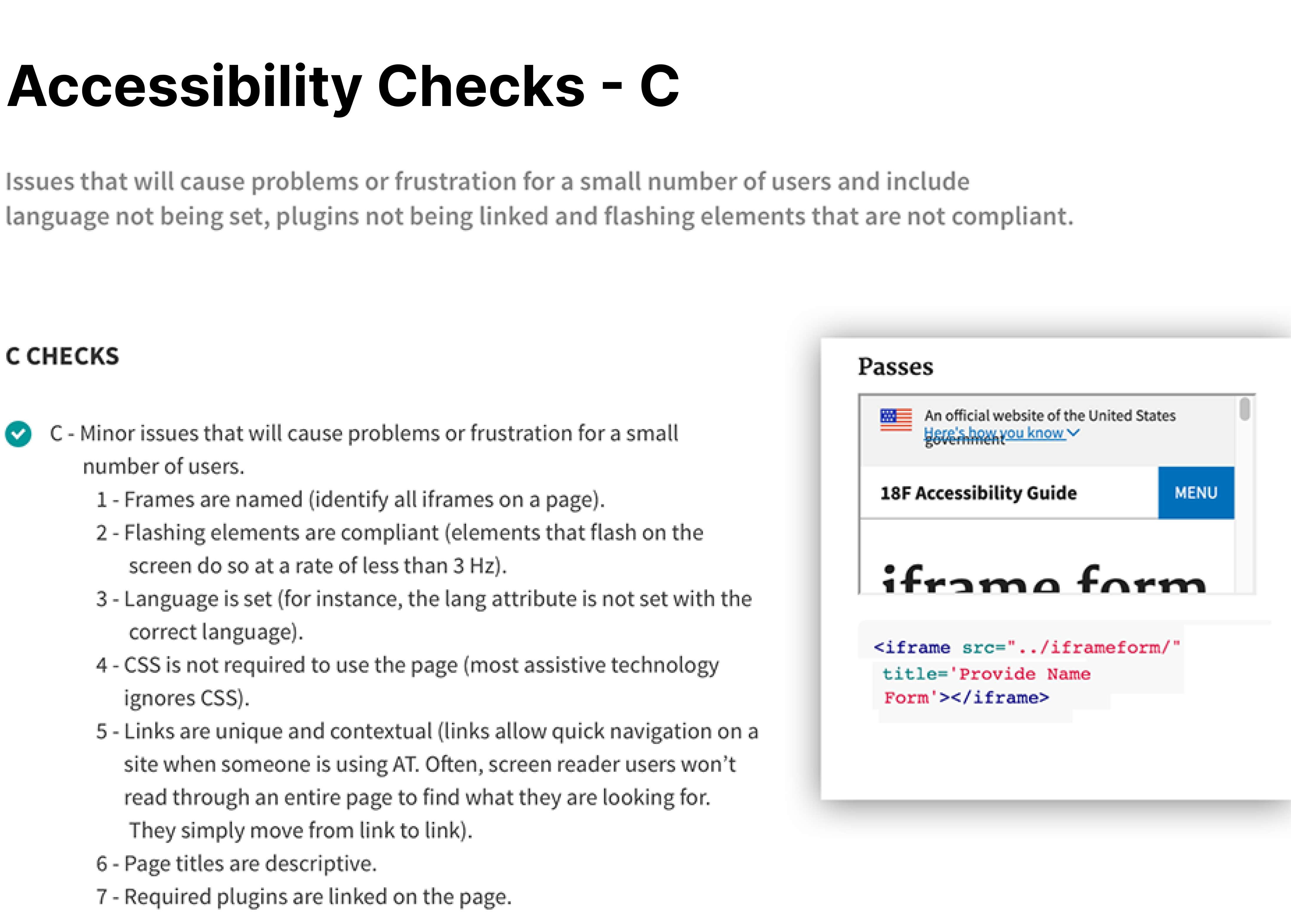
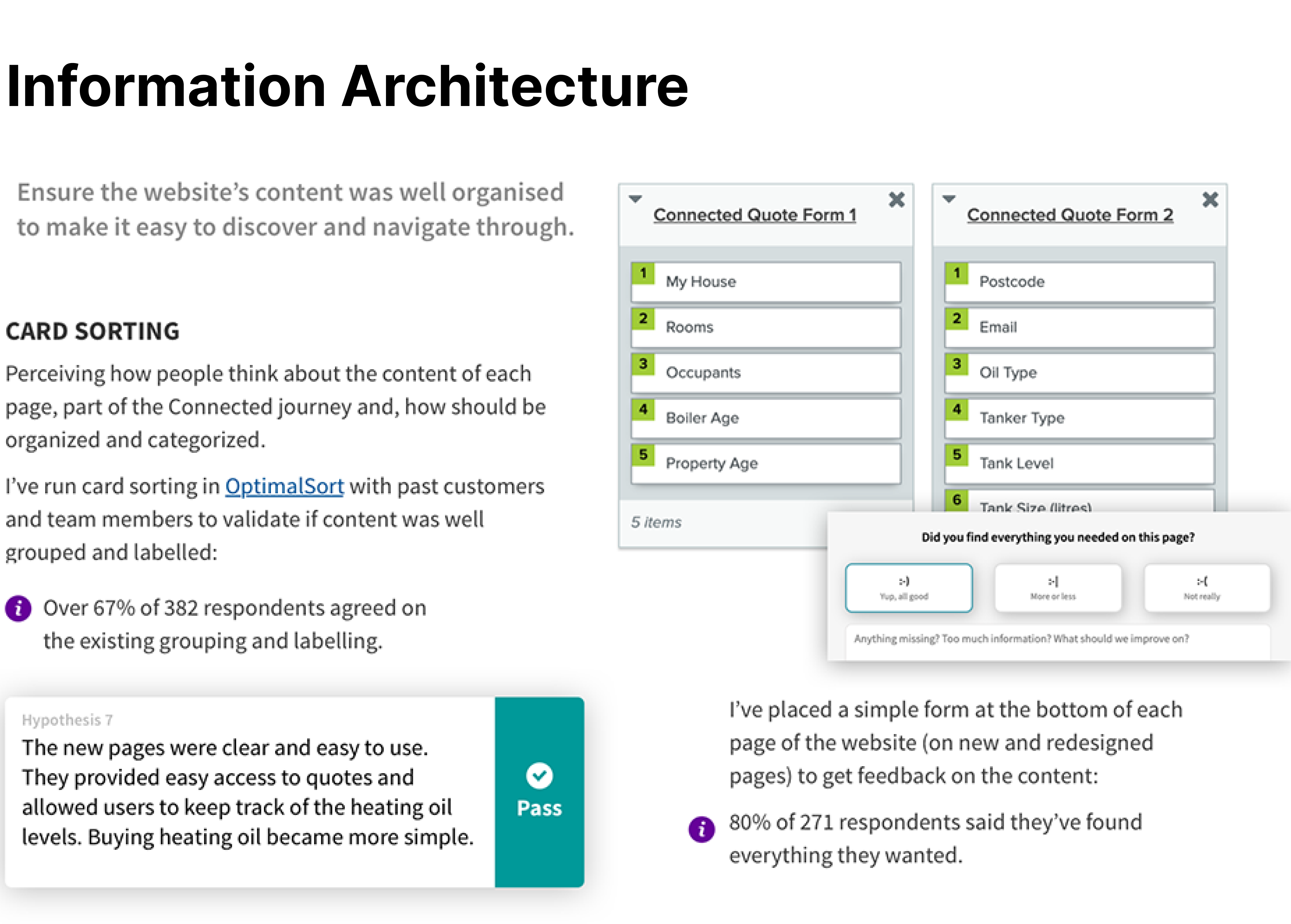
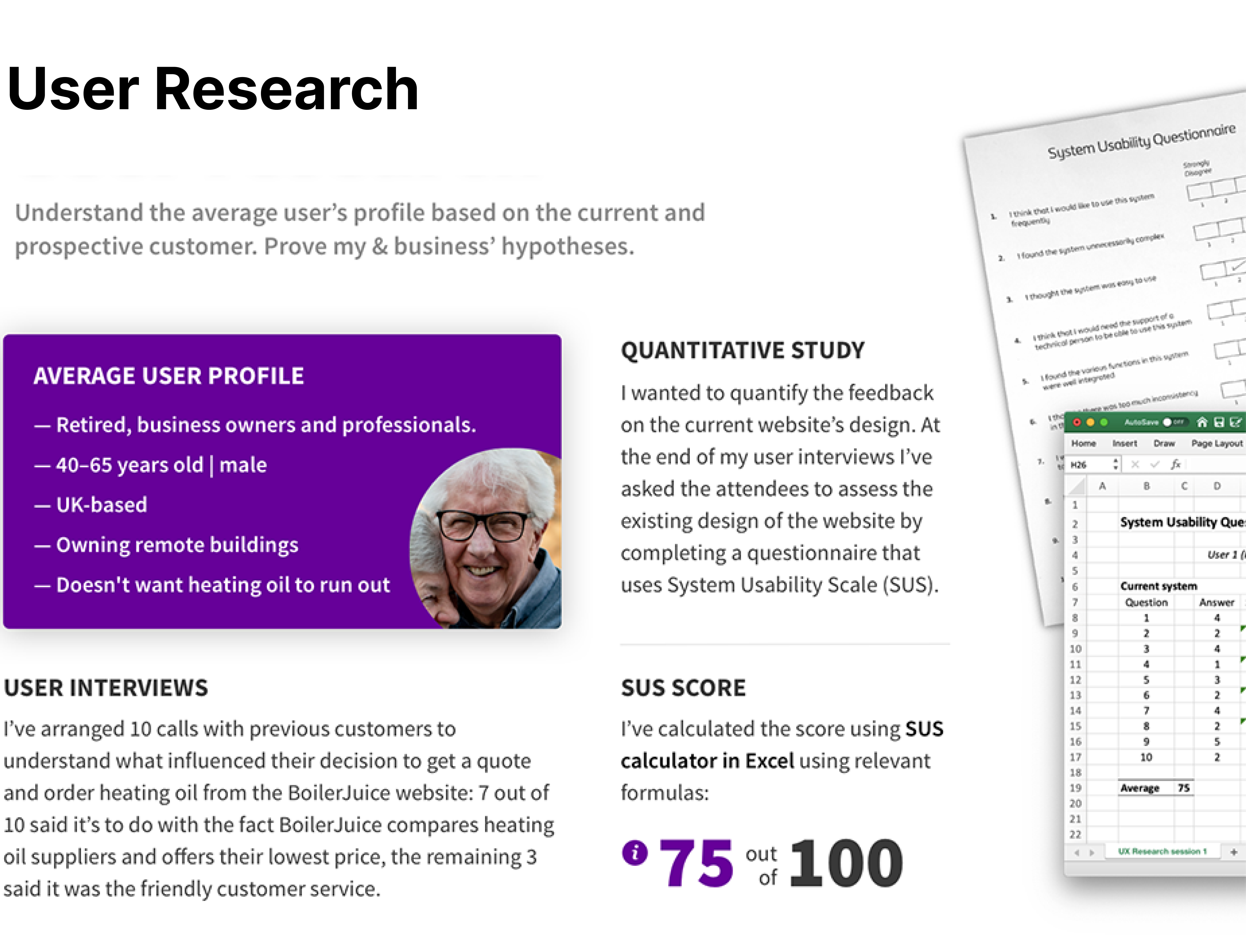
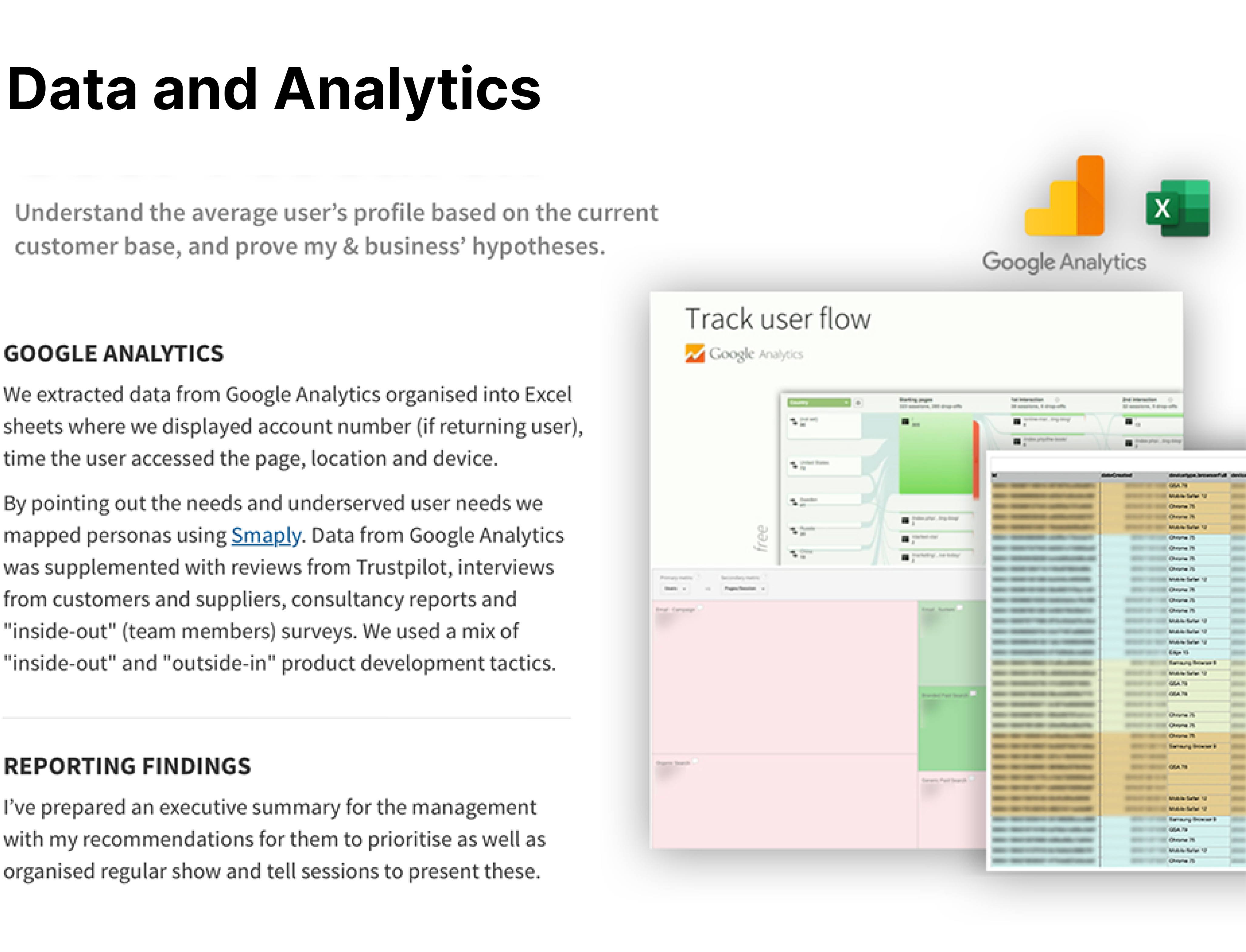
2 - Wireframing & Prototyping
- Mapped user flows in Draw.io and Sketch, capturing both ‘happy’ and ‘unhappy’ paths to anticipate
and address potential issues early in the design process. - Created low- to mid-fidelity interactive wireframes in Axure, Sketch, Figma, and Balsamiq
for stakeholder review, ensuring a shared understanding of functionality and flow. - Applied consistent iconography and clear, accessible headings to support usability.
- Redesigned the quote form to provide faster, clearer heating-oil quotes, while also enabling the
promotion and sale of a heating-oil subscription service. - Focused on improving the end-to-end purchasing experience for heating oil. I redesigned key pages
in the checkout journey, including product selection, shopping cart, payment, and the final confirmation page,
to ensure a smoother, more transparent, and mobile-friendly process. The goal was to reduce friction, increase
trust at each step, and provide clear reassurance after purchase. - Refined marketing propositions, placing them more strategically on the page and removing visual clutter to improve clarity and focus.
- Implemented consistent iconography and clear headings.
- Added an improved search function for faster access to key documents and data.
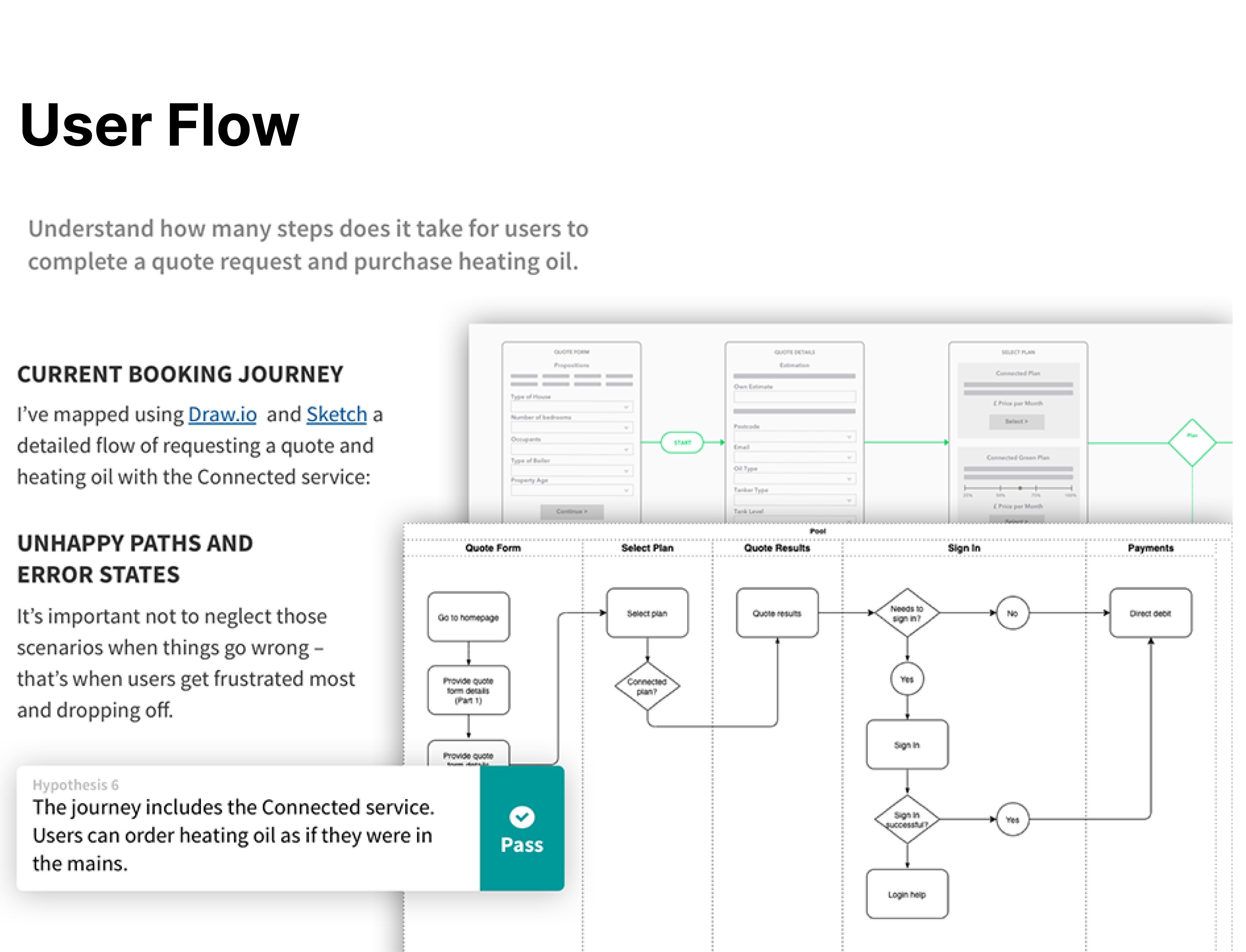
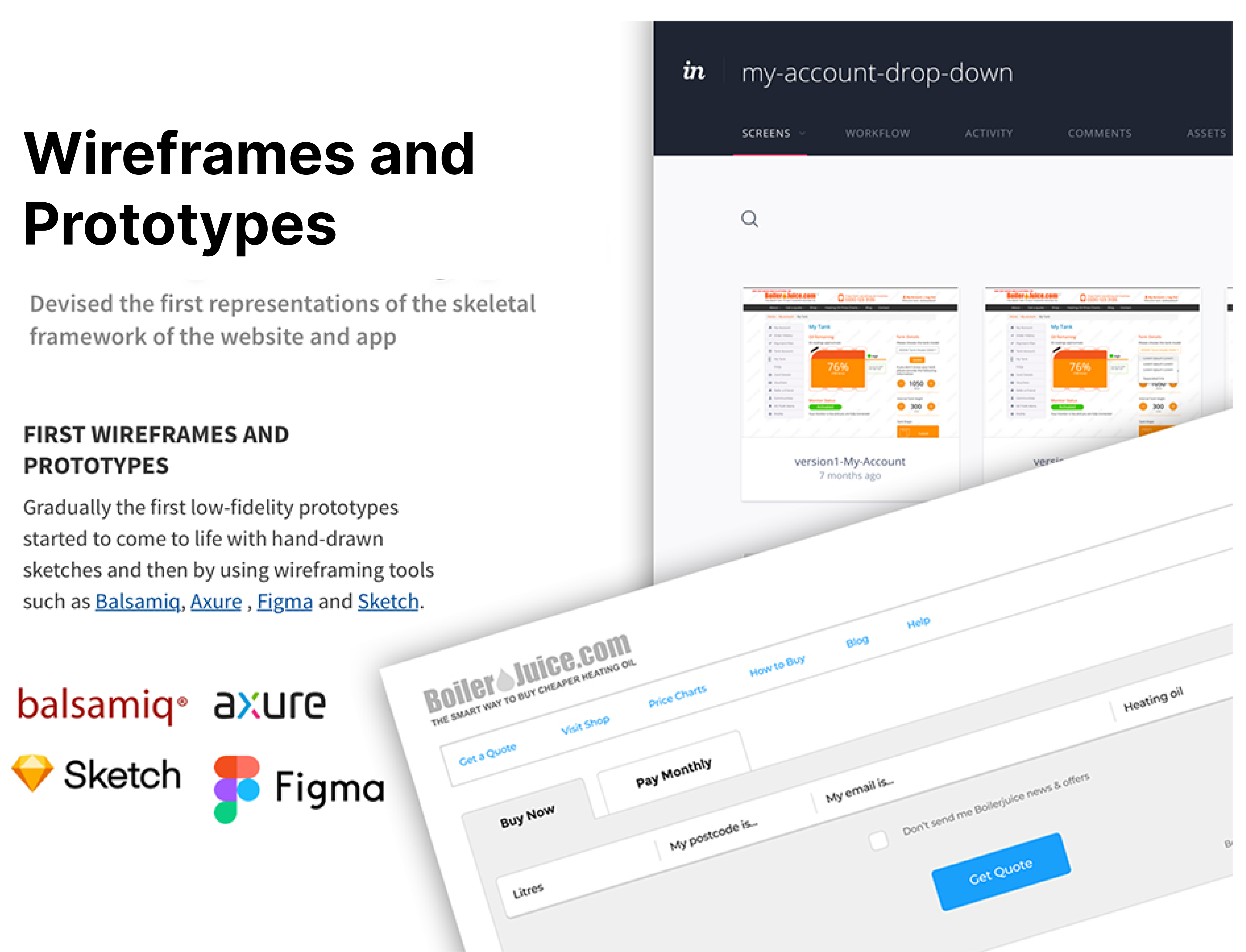
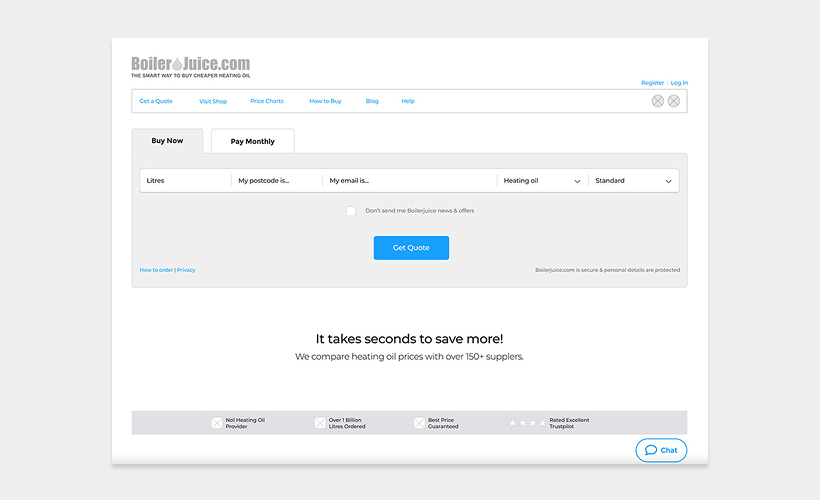
BoilerJuice homepage wireframe designed using Axure RP.
Source images: Boilerjuice Ltd.
3 - Testing & Iteration with live performance and feedback
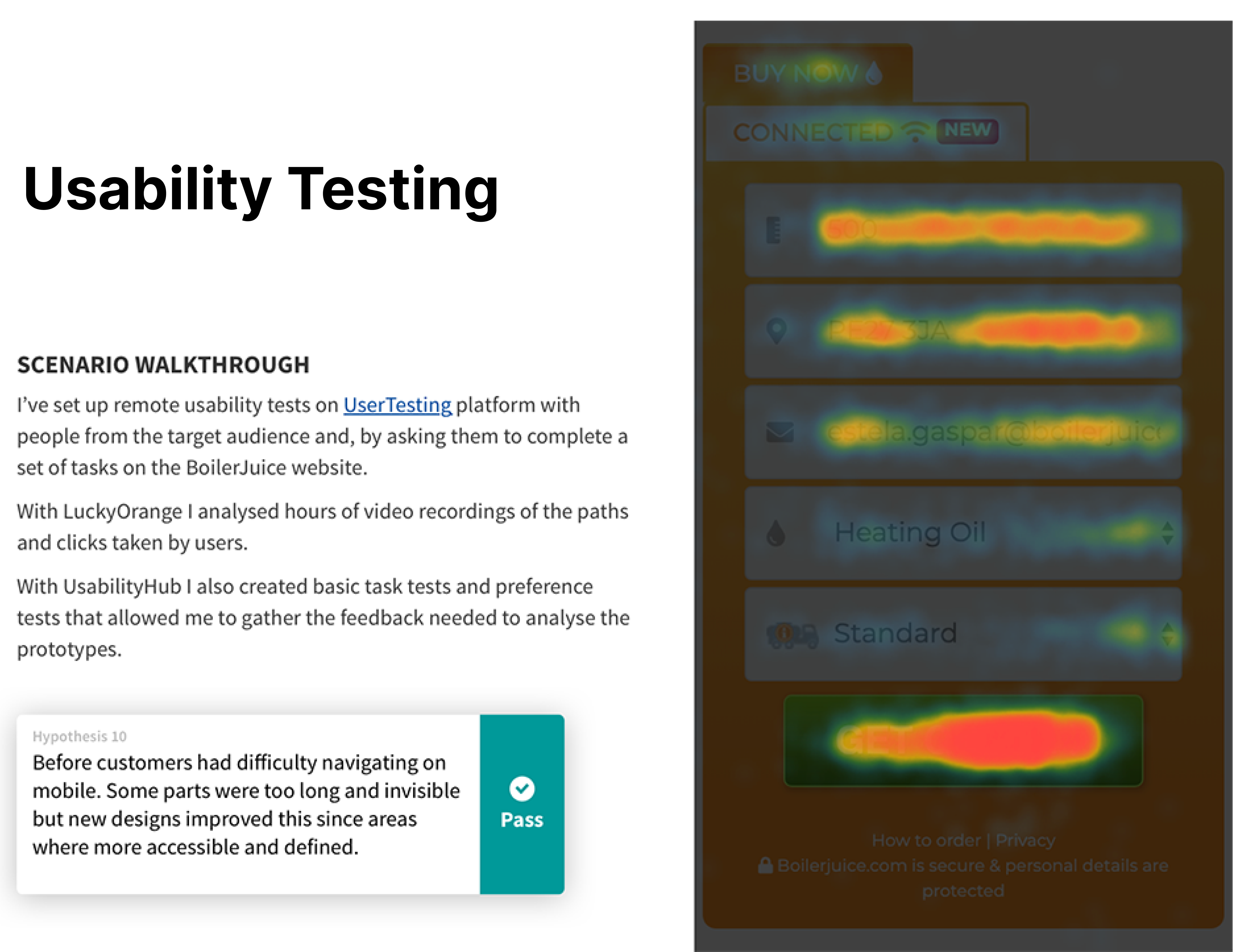
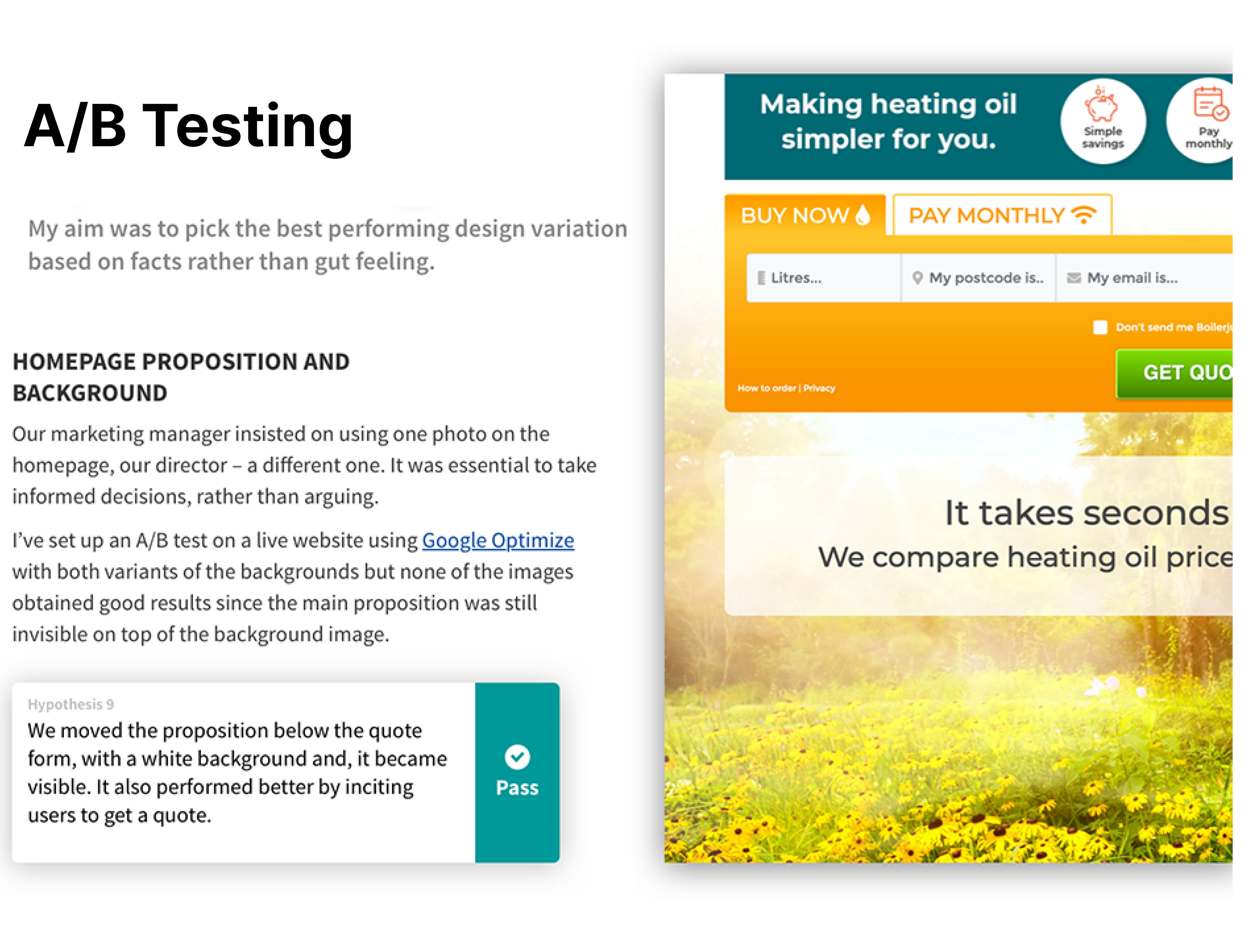
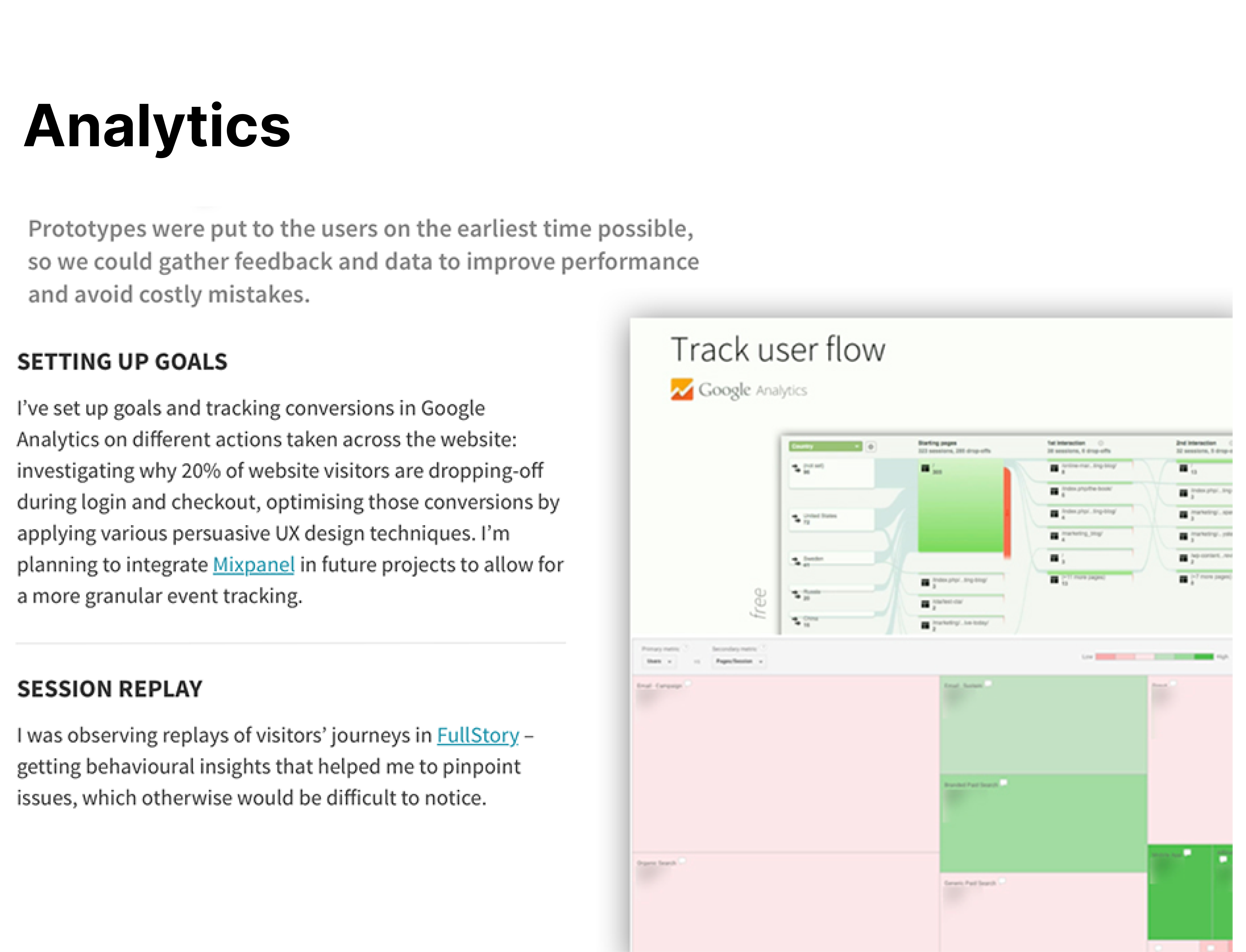
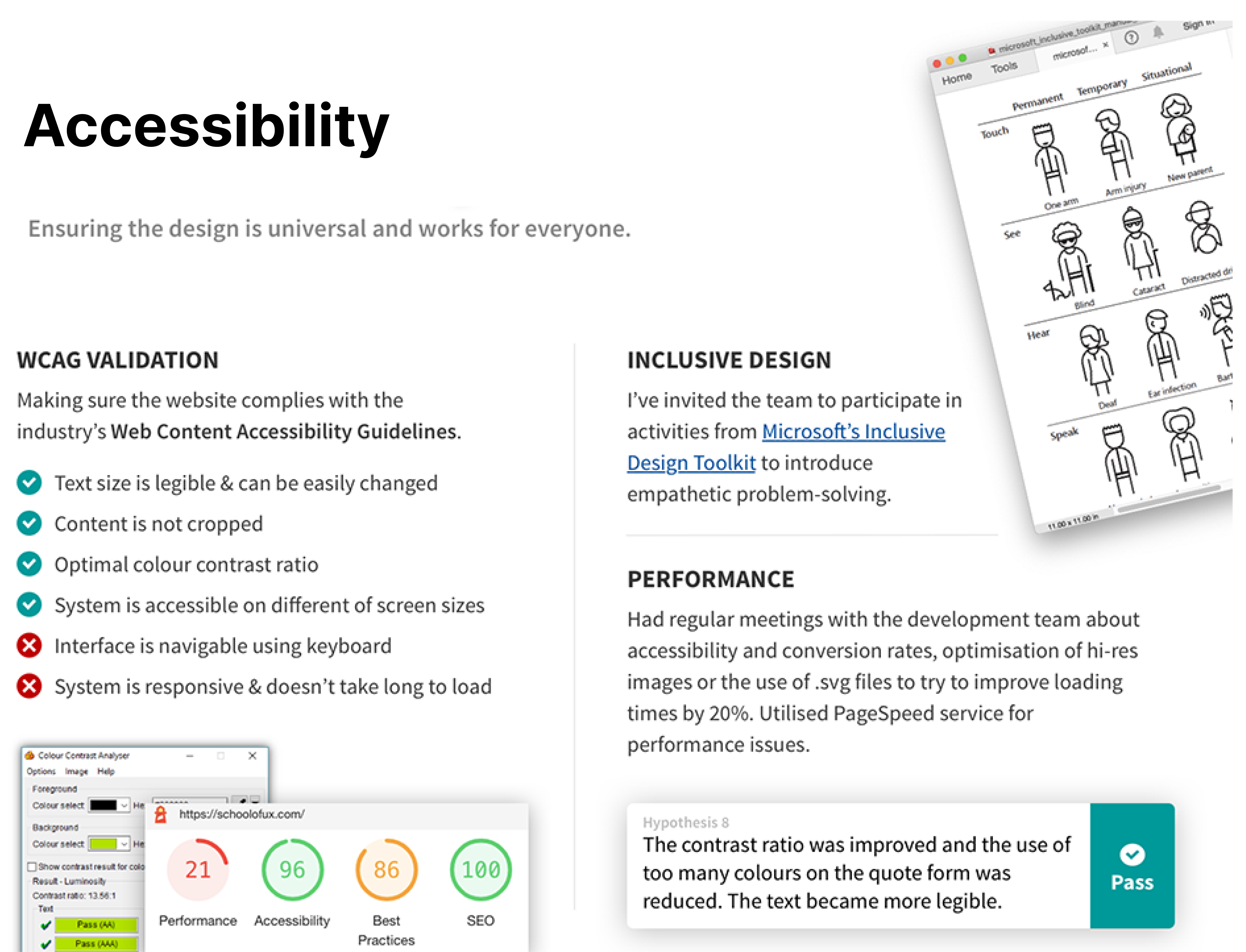
4 - Sign-off and handover
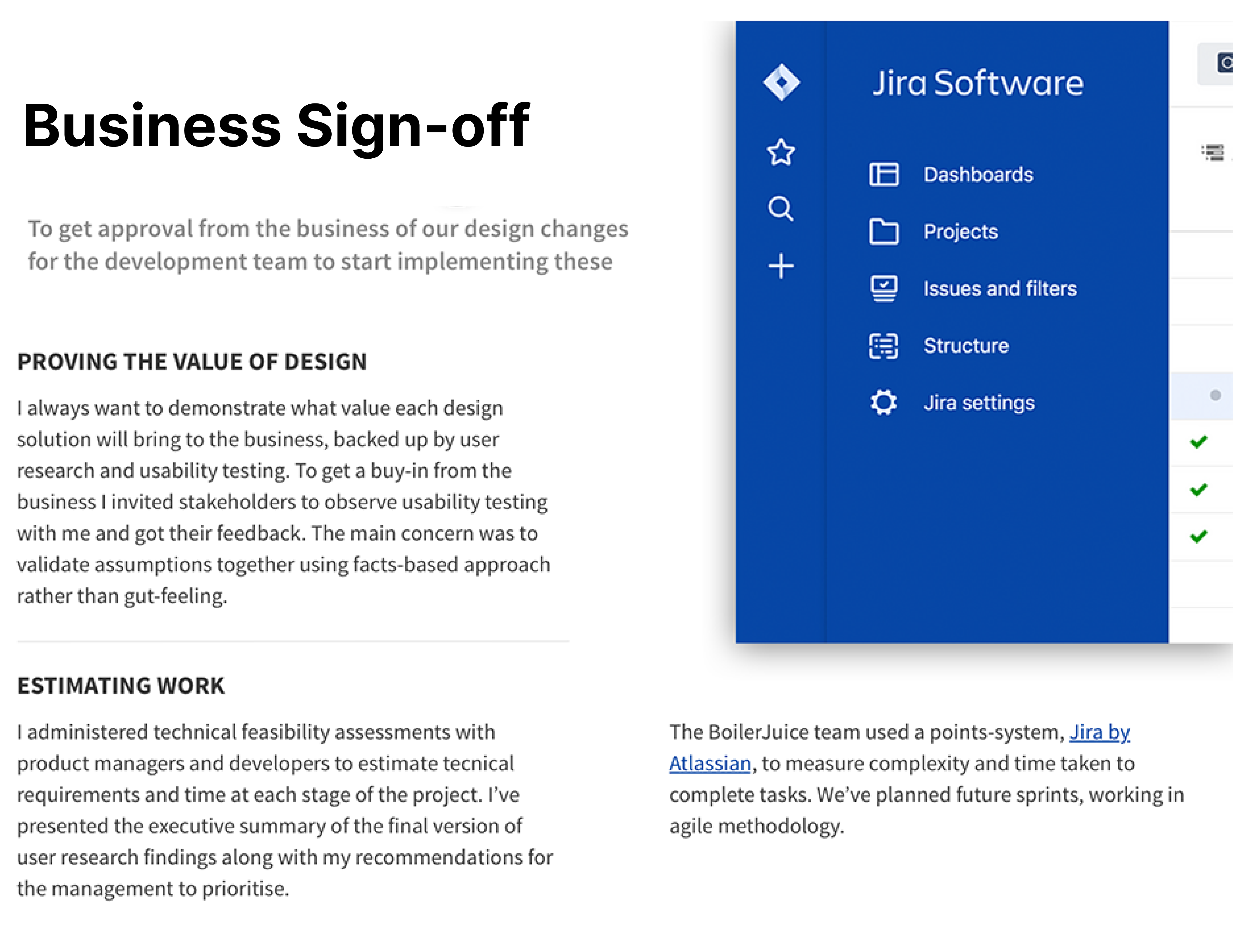
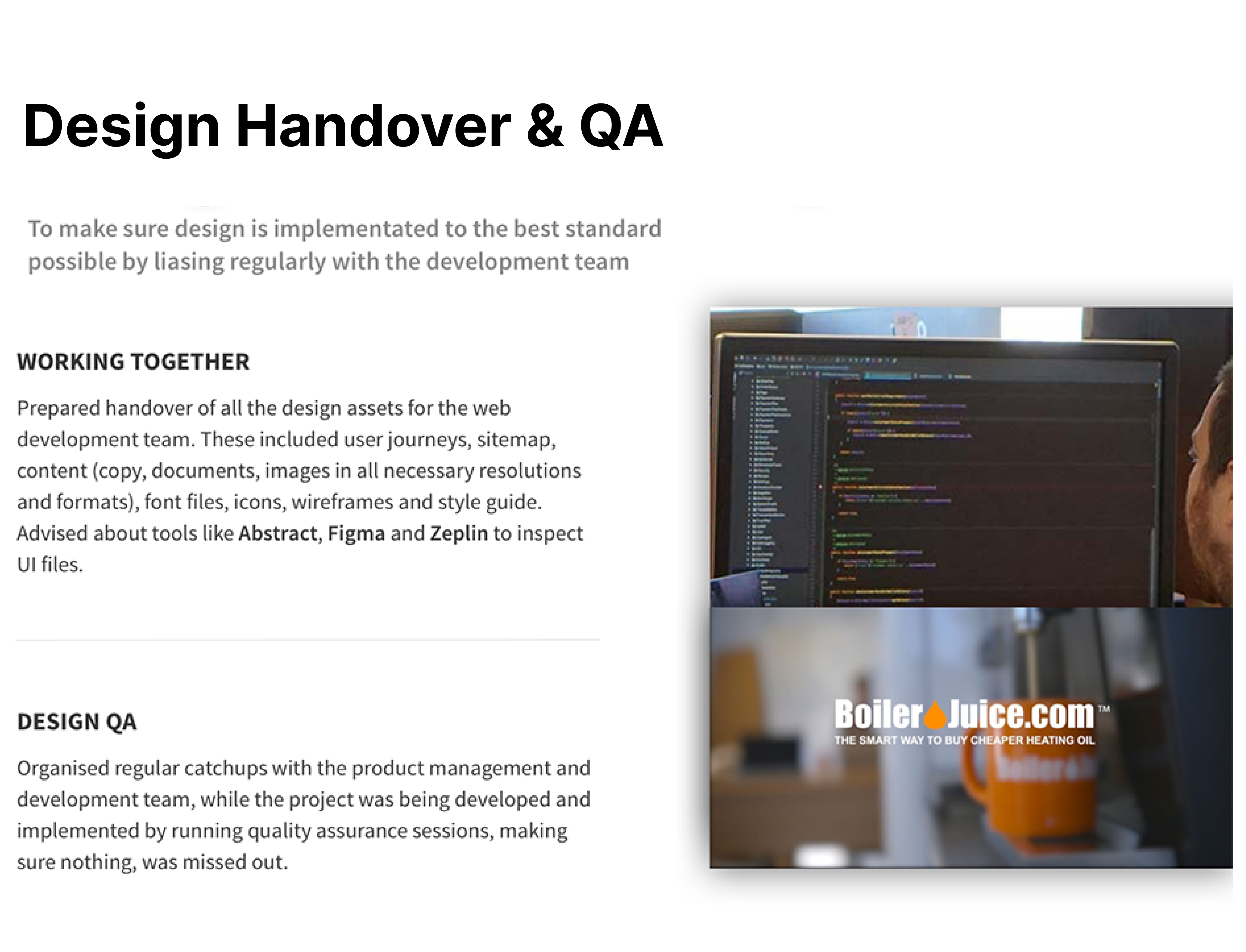
Outcome
BoilerJuice was a growing oil marketplace, but customers often found the ordering process clunky, price
comparisons confusing, and overall trust low.
In winter, heating oil deliveries could take one to two weeks, and many families were left without heating
because the time-consuming process of requesting quotes, making payments, and arranging deliveries created
delays.
- Increase in self-serve ordering; CS calls shifted toward proactive follow-ups rather than winter emergencies.
- Faster quote-to-order and clearer delivery expectations, improving perceived reliability.
- Higher repeat usage via alerts and subscription options, strengthening loyalty.
- Operational resilience during peak demand due to earlier reordering and better transparency.
But after UX improvements:
BoilerJuice key results
*Indicative ranges shown where exact figures are confidential.
BoilerJuice - Key results visualised
My contribution
- Accessible, mobile-first redesign: Reworked information architecture, forms, error states, and contrast to make the experience clearer and more inclusive across web, mobile, and app.
- Quote & checkout clarity: Designed new quote-generation screens and simplified steps/copy to reduce friction and decision fatigue.
- Connected Service (subscription-style): Co-created and redesigned the proposition and end-to-end flows so buying oil felt as effortless as a mains connection.
- IoT-enabled dashboards: Redesigned account areas to ingest smart-tank readings; introduced low-level alerts, usage trends, refill guidance, and exception handling.
- Proactive issue surfacing: Embedded warnings and guidance earlier in the journey, improving first-time resolution and the quality of CS interactions.
- Omnichannel orchestration: Established shared patterns and components for a consistent, uninterrupted experience across channels and devices.
- Evidence-driven iteration: Led discovery and validation (interviews, journey mapping, analytics, A/B tests), prioritising a roadmap that balanced user value with operational feasibility.
- Delivery partnership: Worked closely with engineers on specs, edge cases, and QA/UAT to de-risk implementation and speed up release cycles.
The outcome - new screens
User journey from quote to order confirmation page.
Screen 1

Screen 2

Screen 3

Screen 4
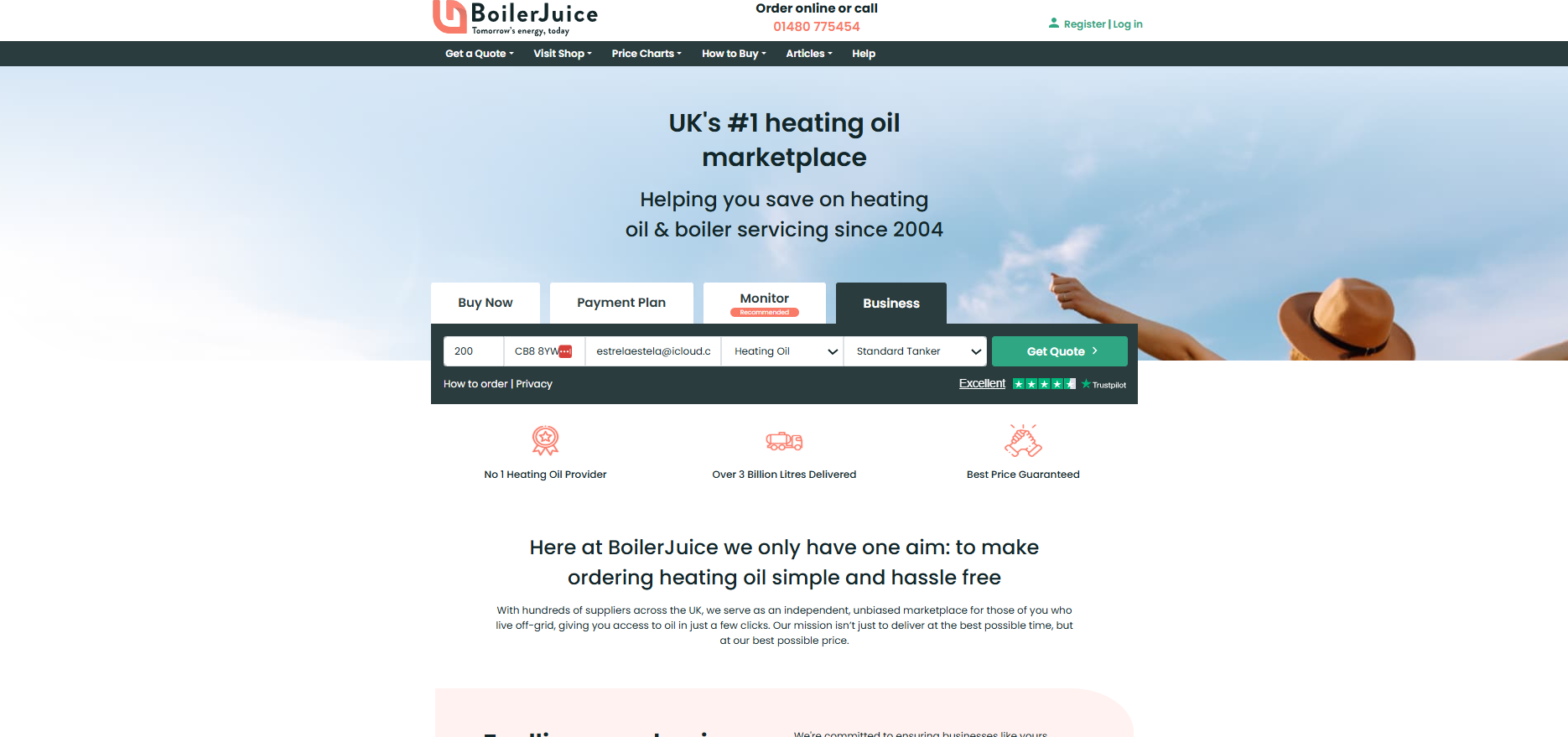
Screen 5
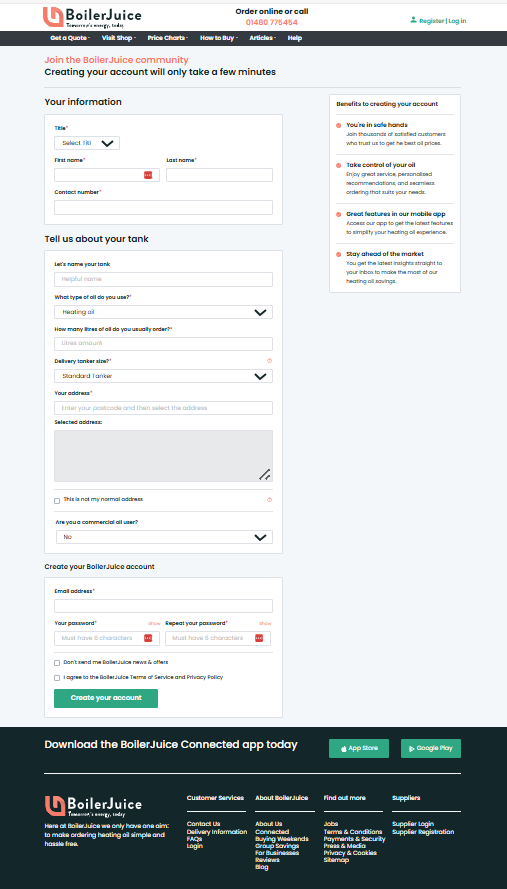
Screen 6
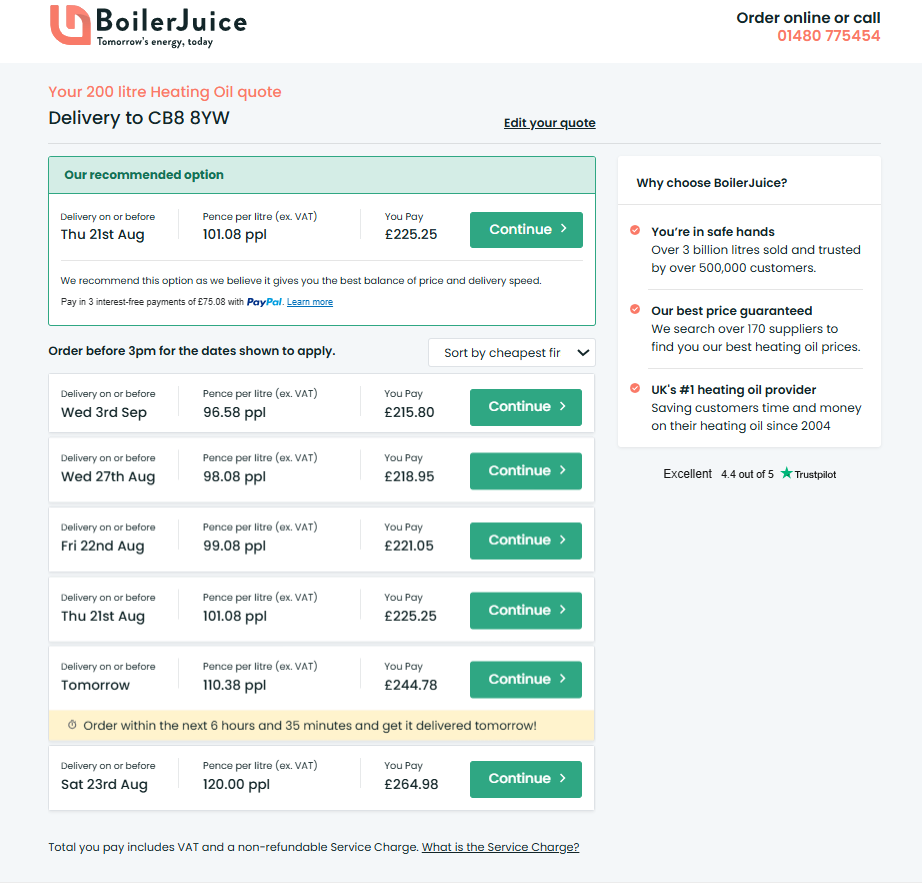
Screen 7
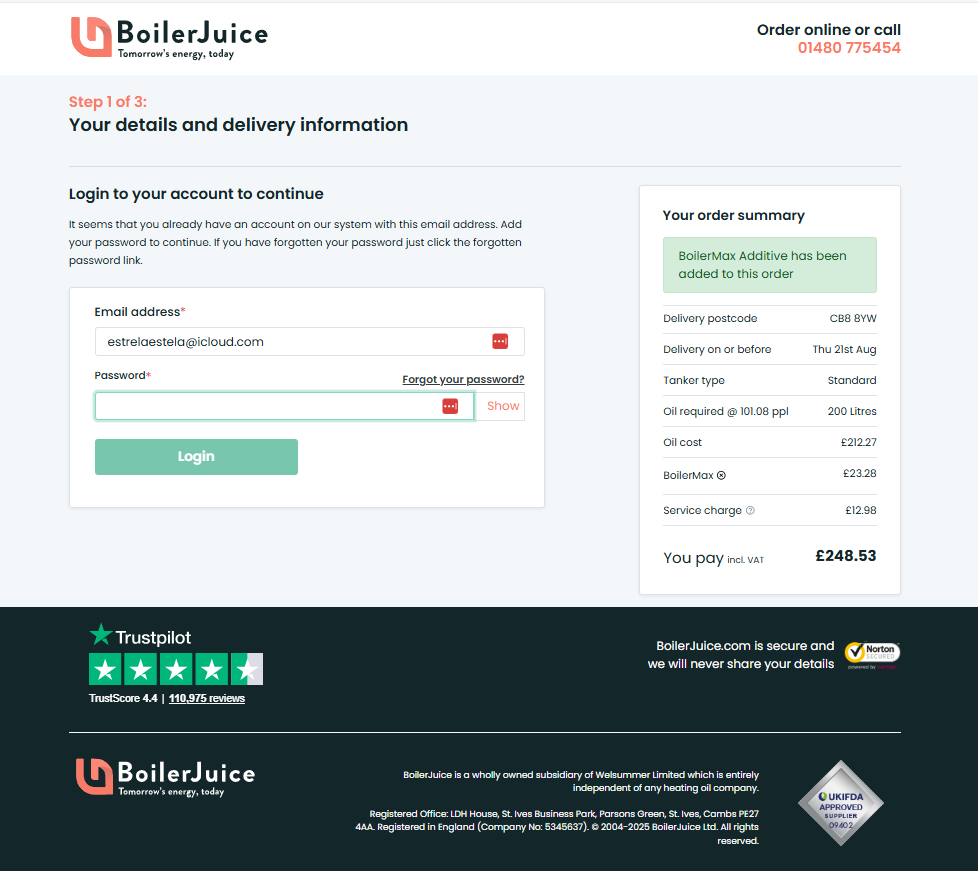
Screen 8
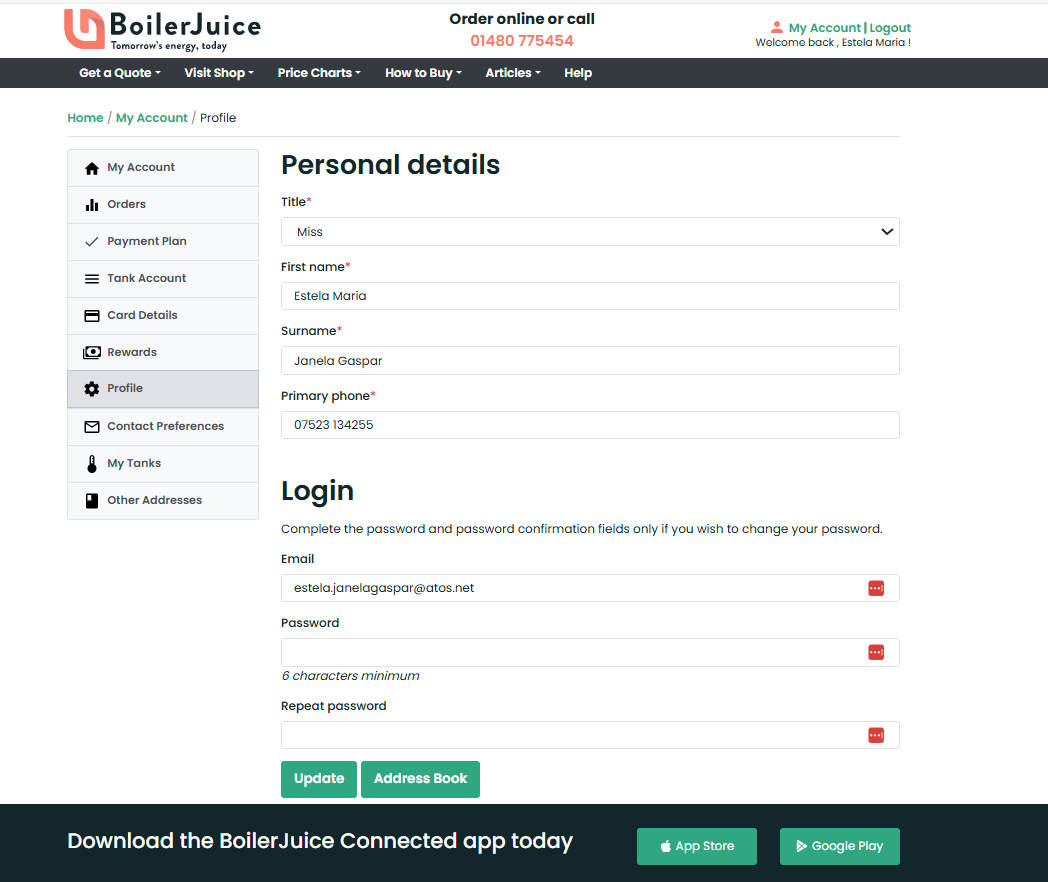
Screen 9
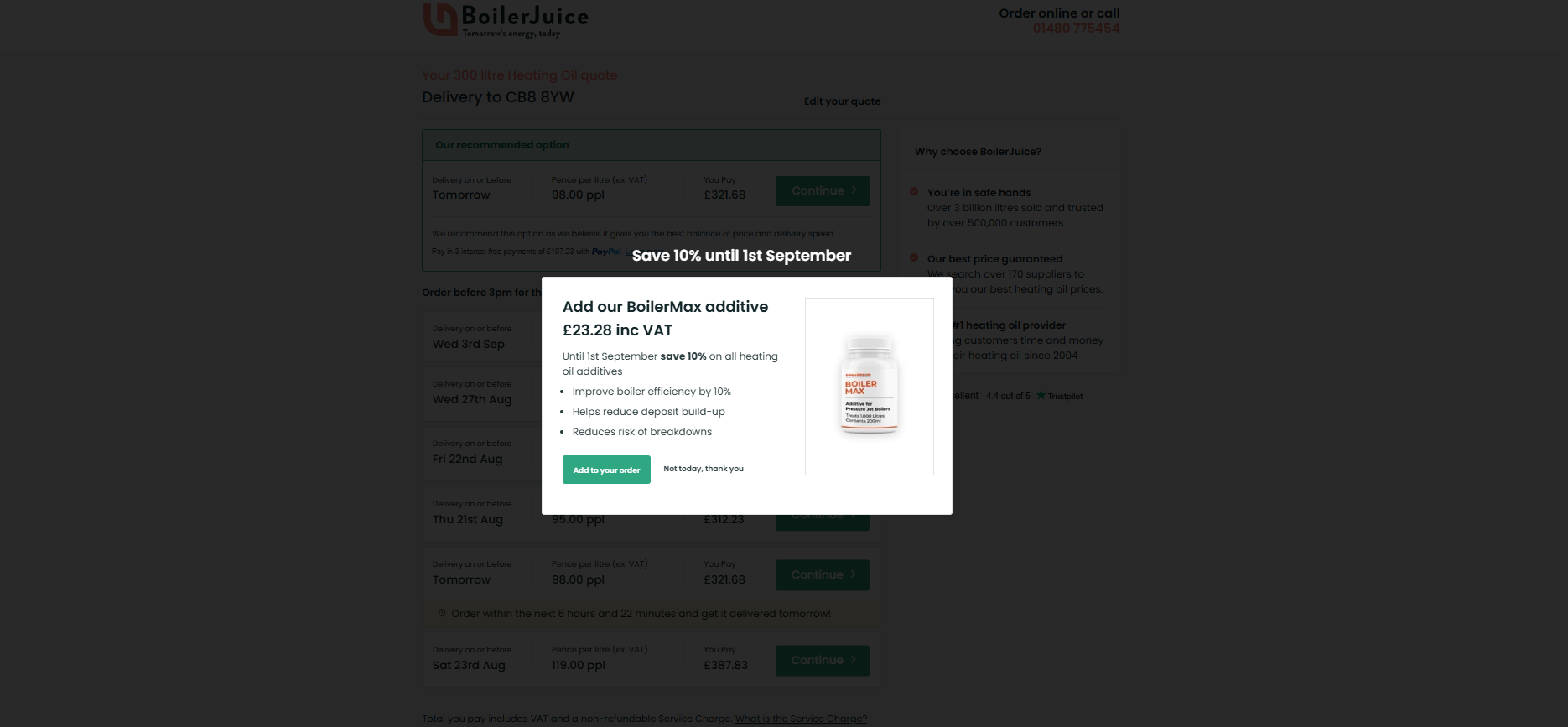
Screen 10
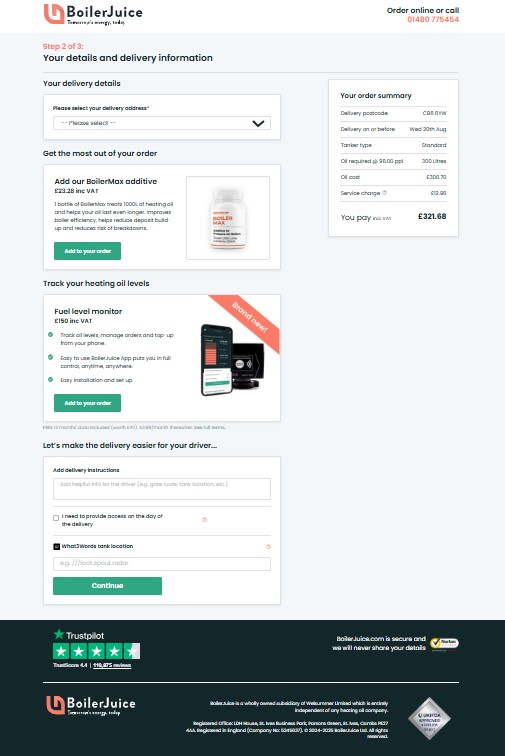
Screen 11
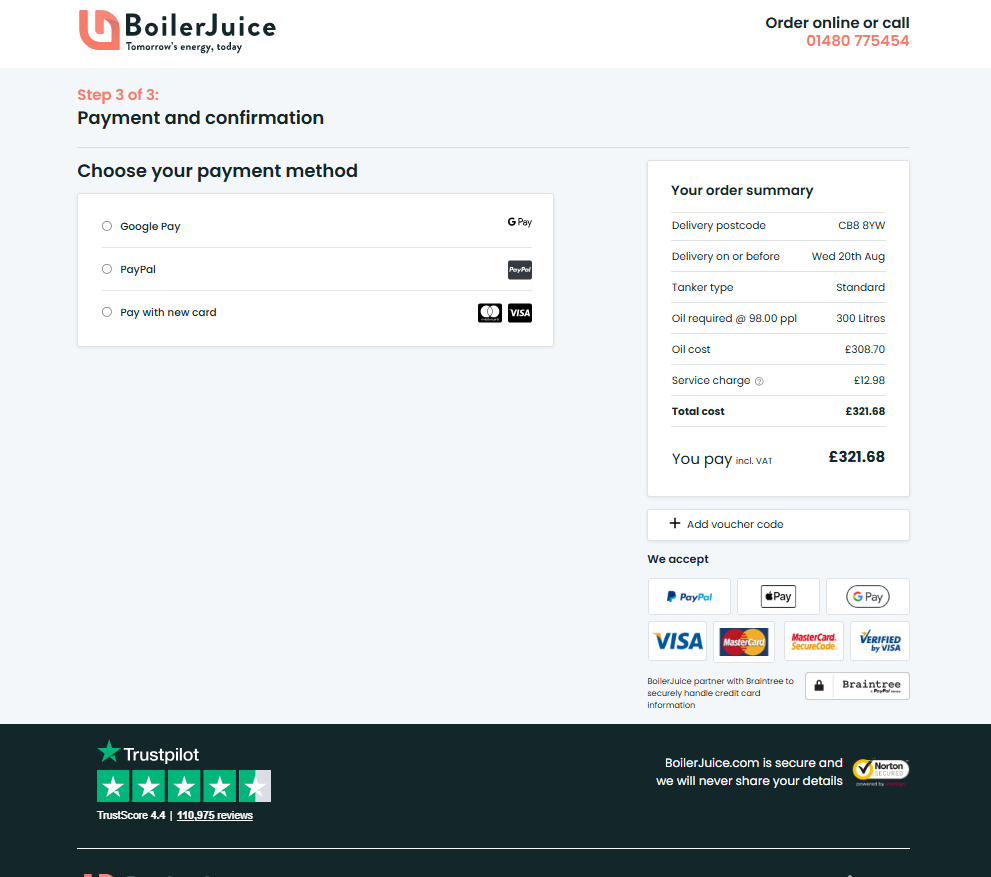
Screen 12
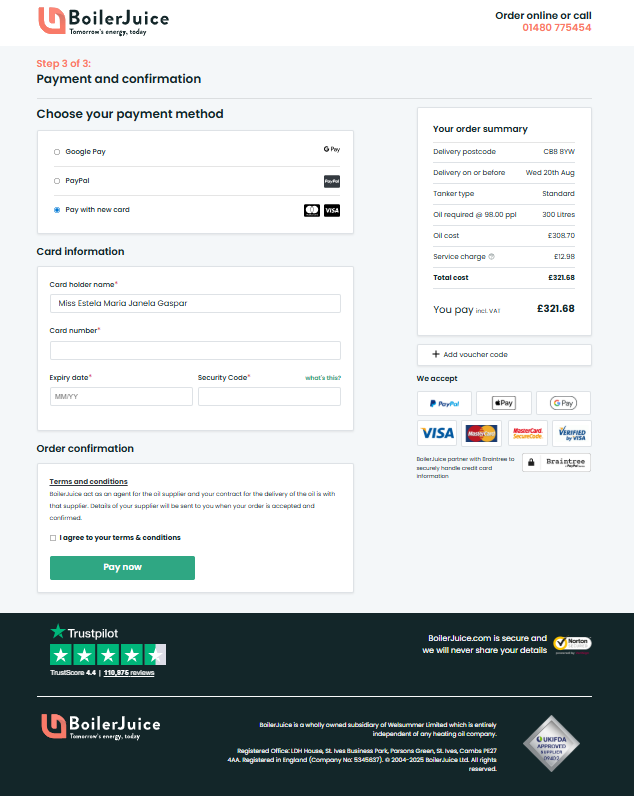
Screen 13
Account dashboard screens and help pages.
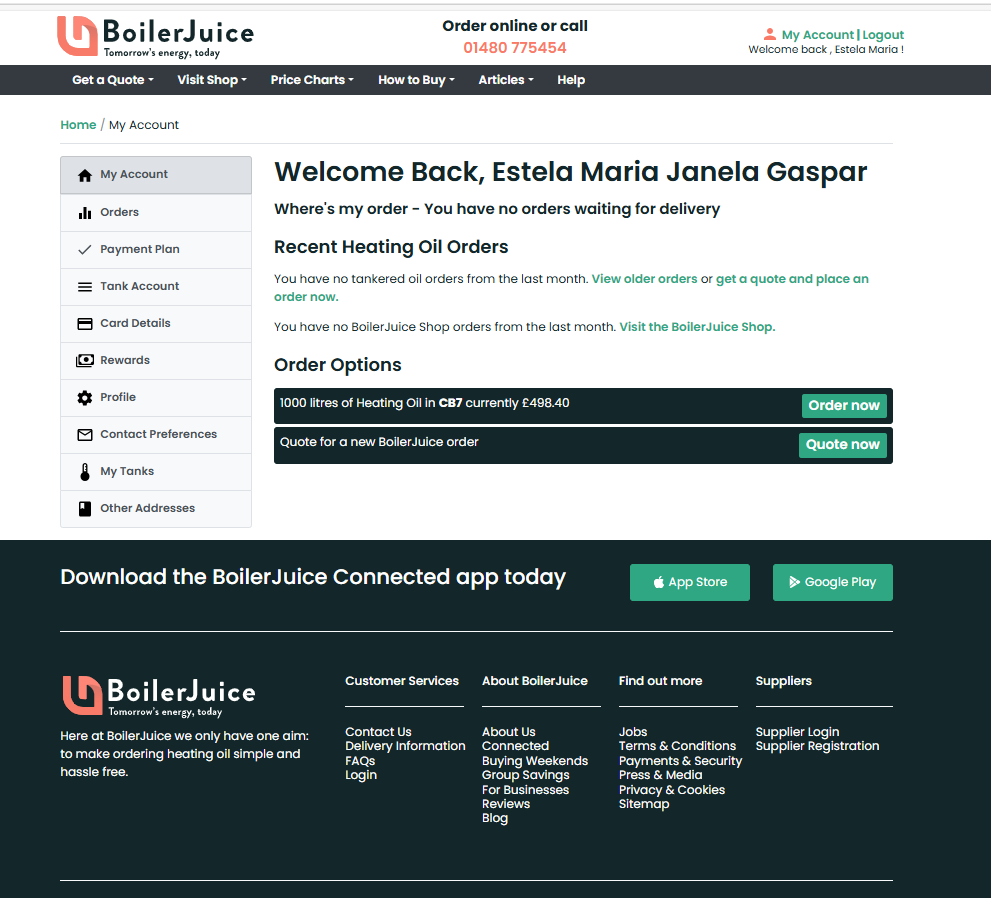
Screen 14

Screen 15
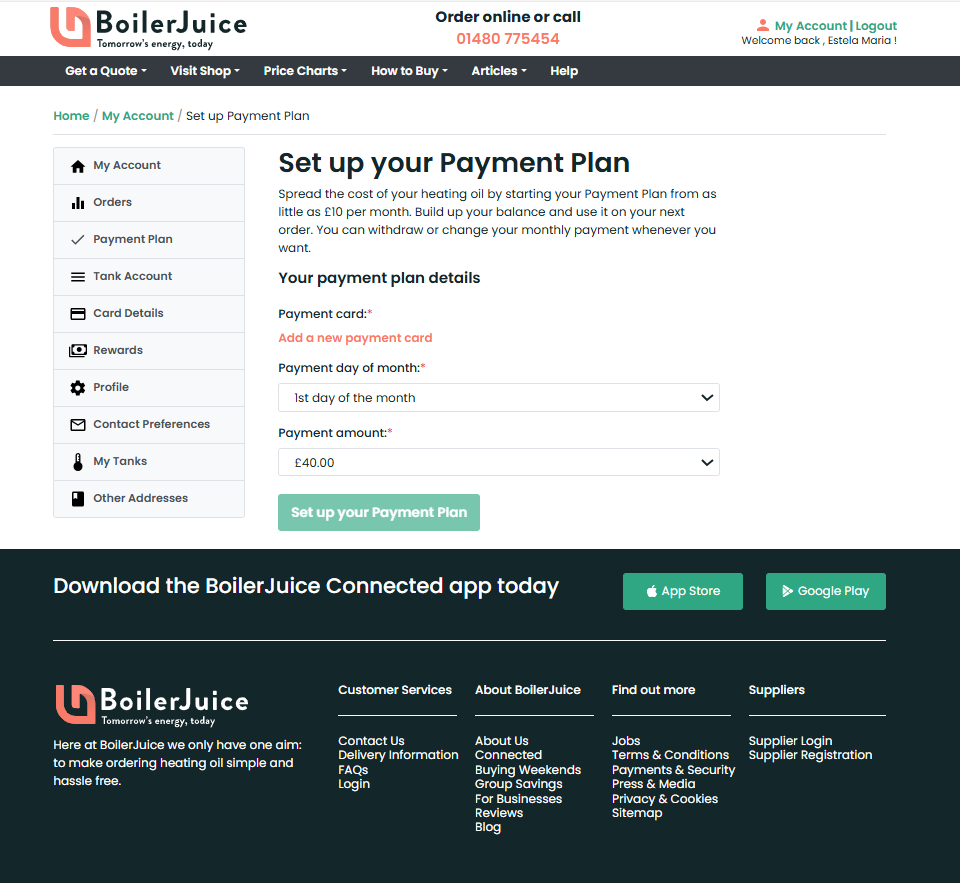
Screen 16
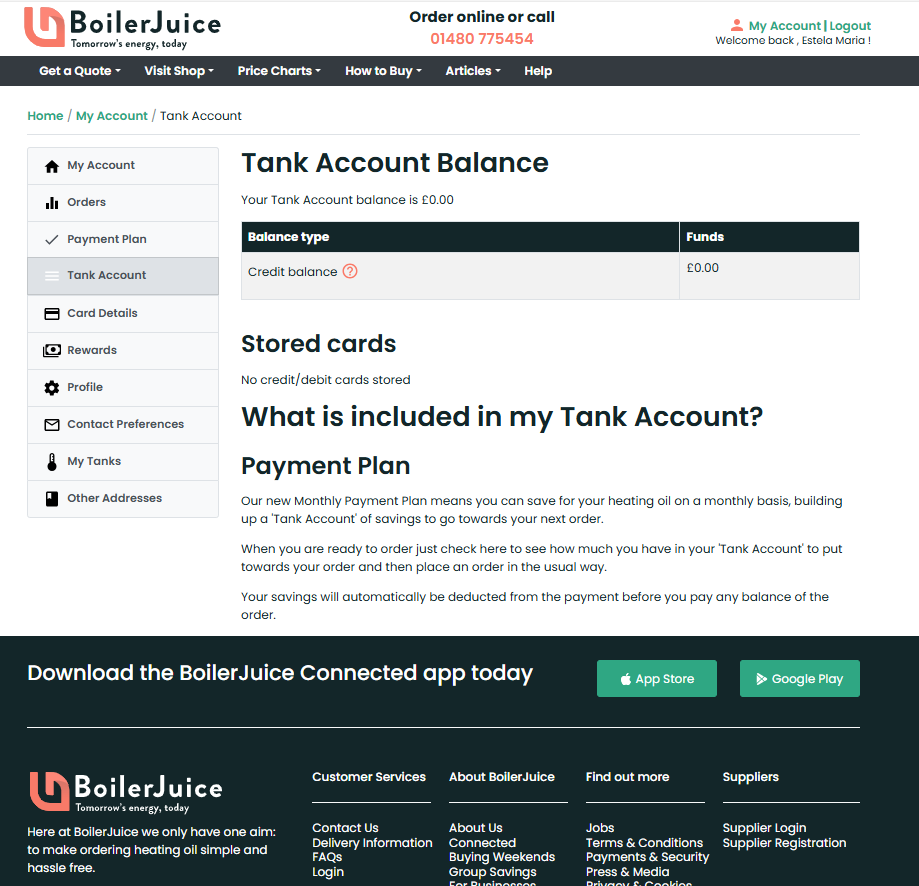
Screen 17
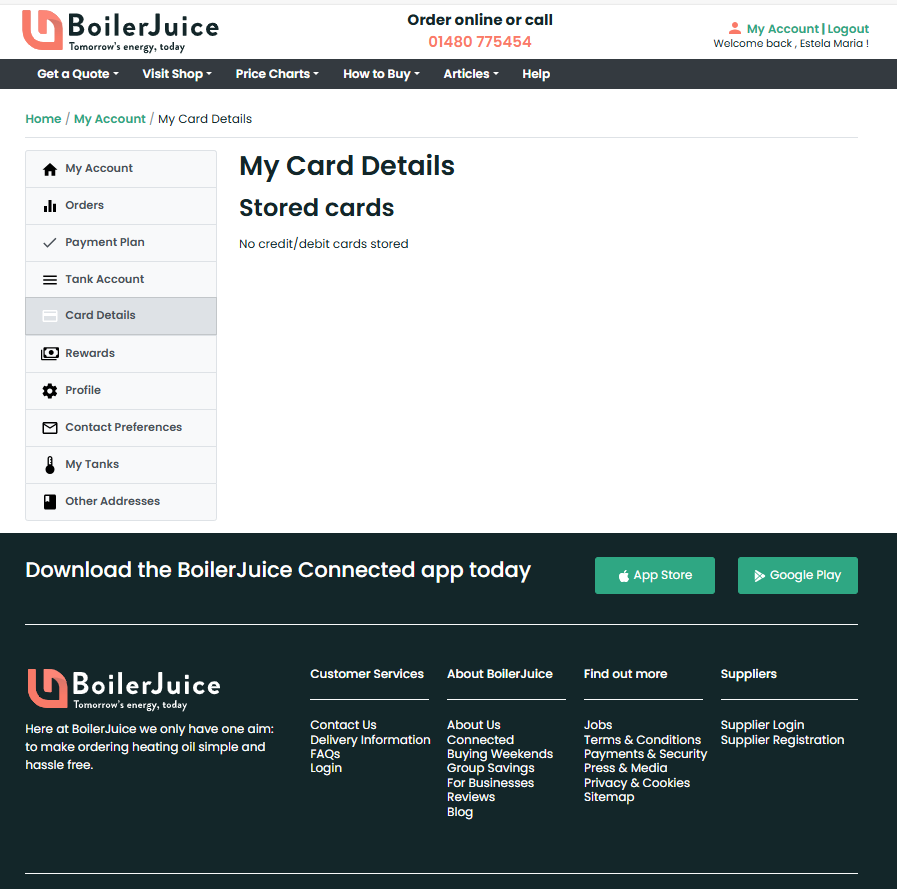
Screen 18
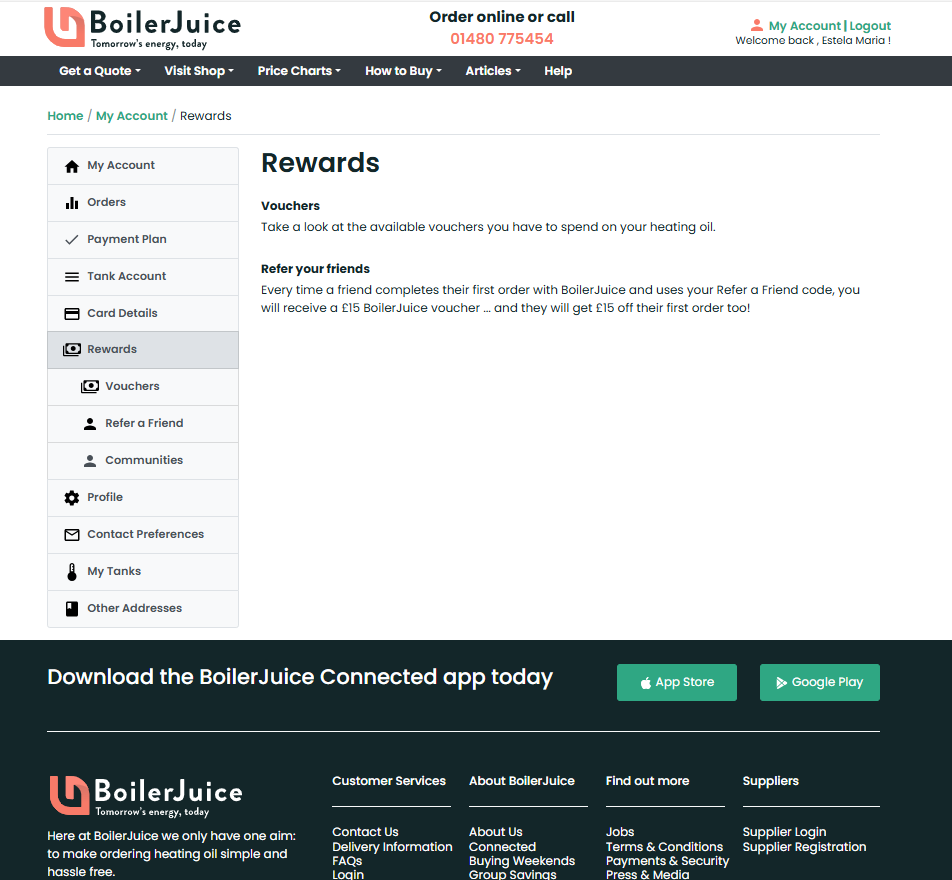
Screen 19
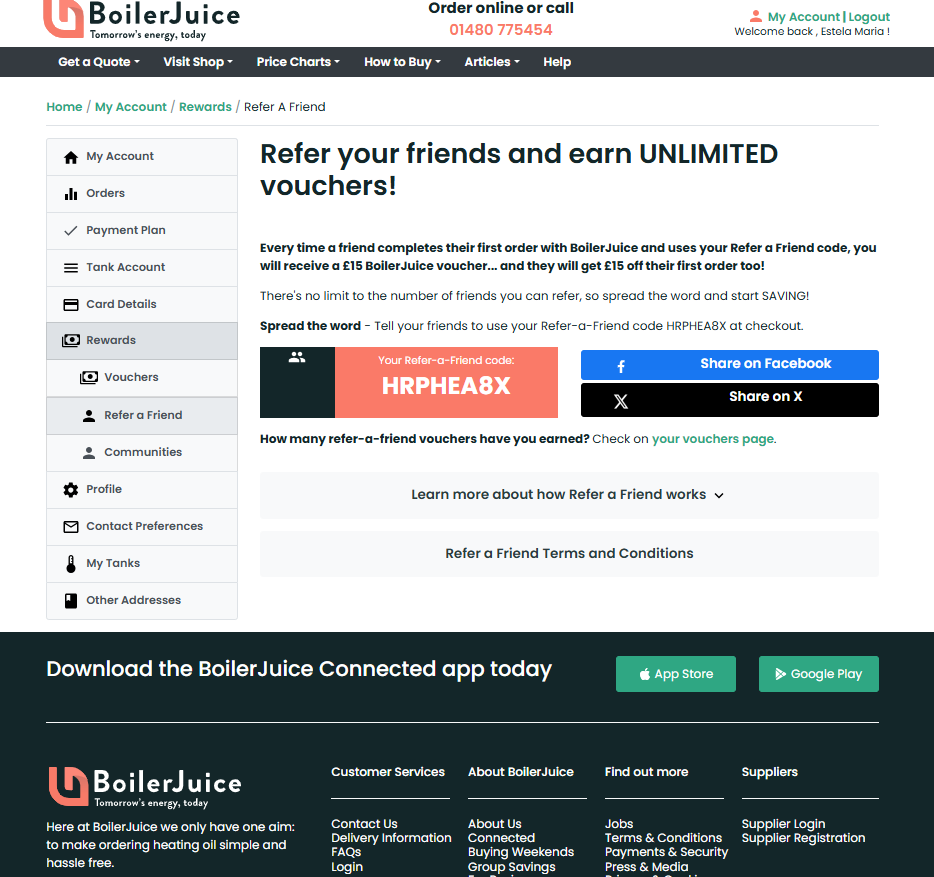
Screen 20
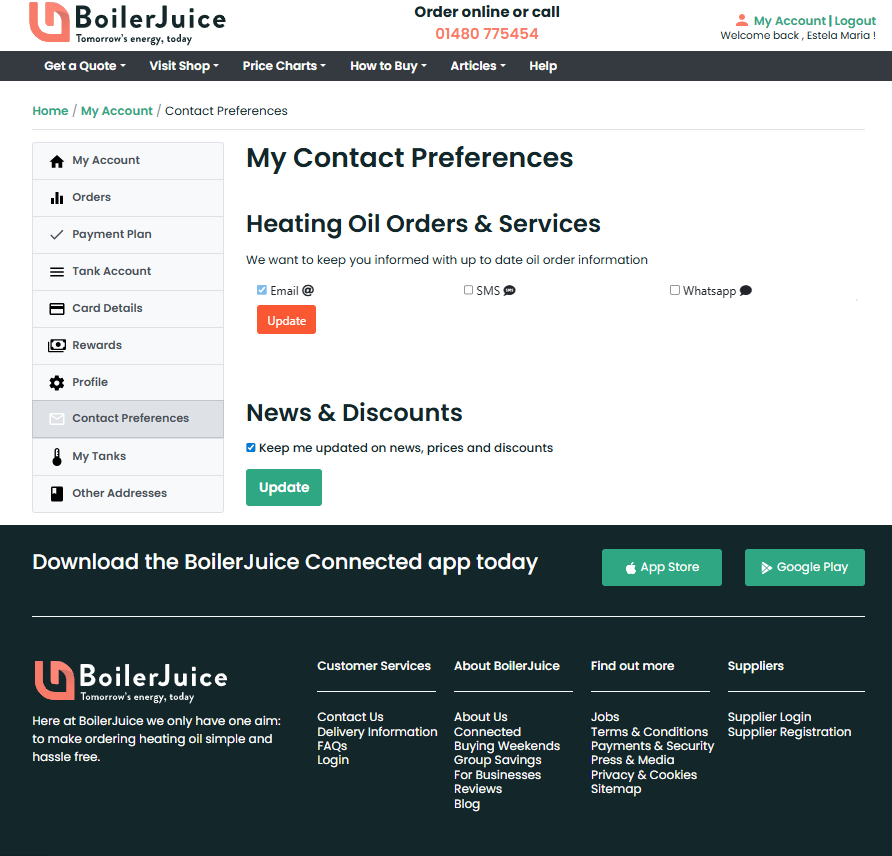
Screen 21
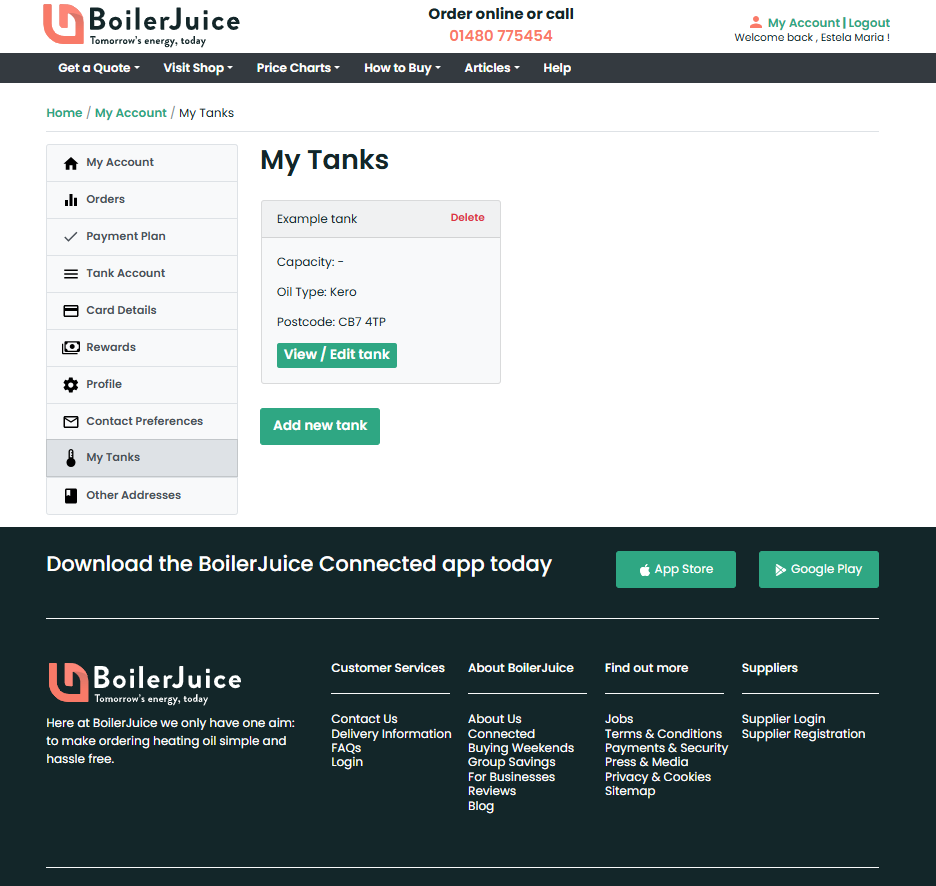
Screen 22
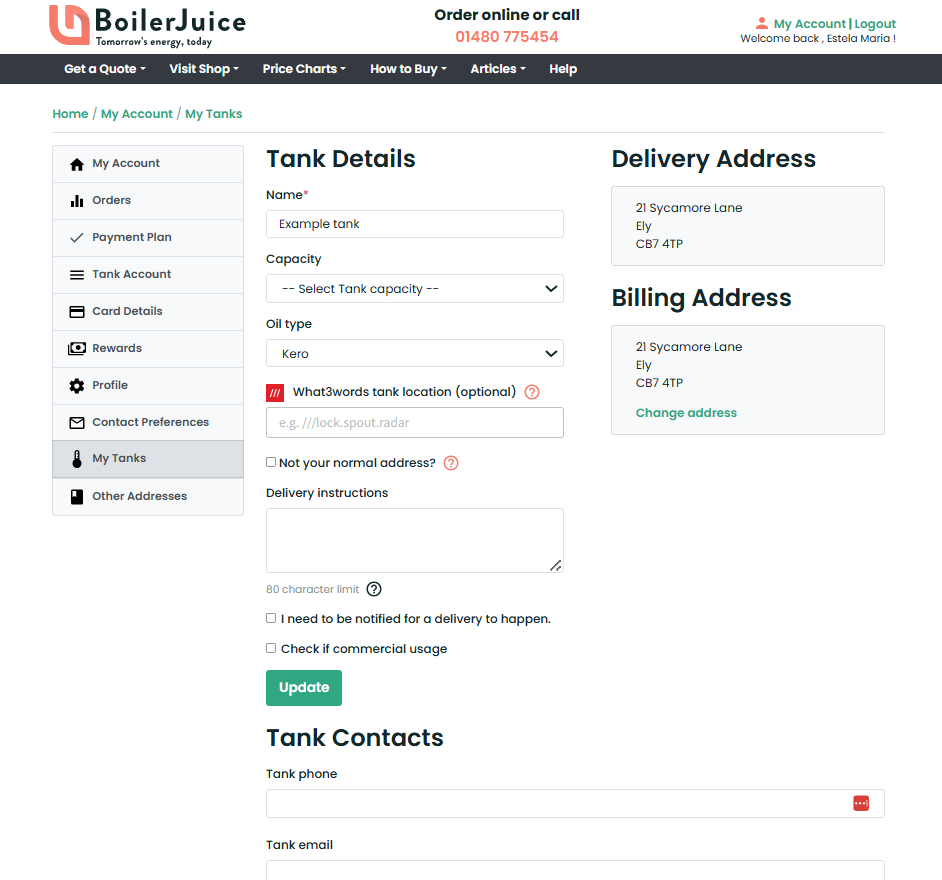
Screen 23
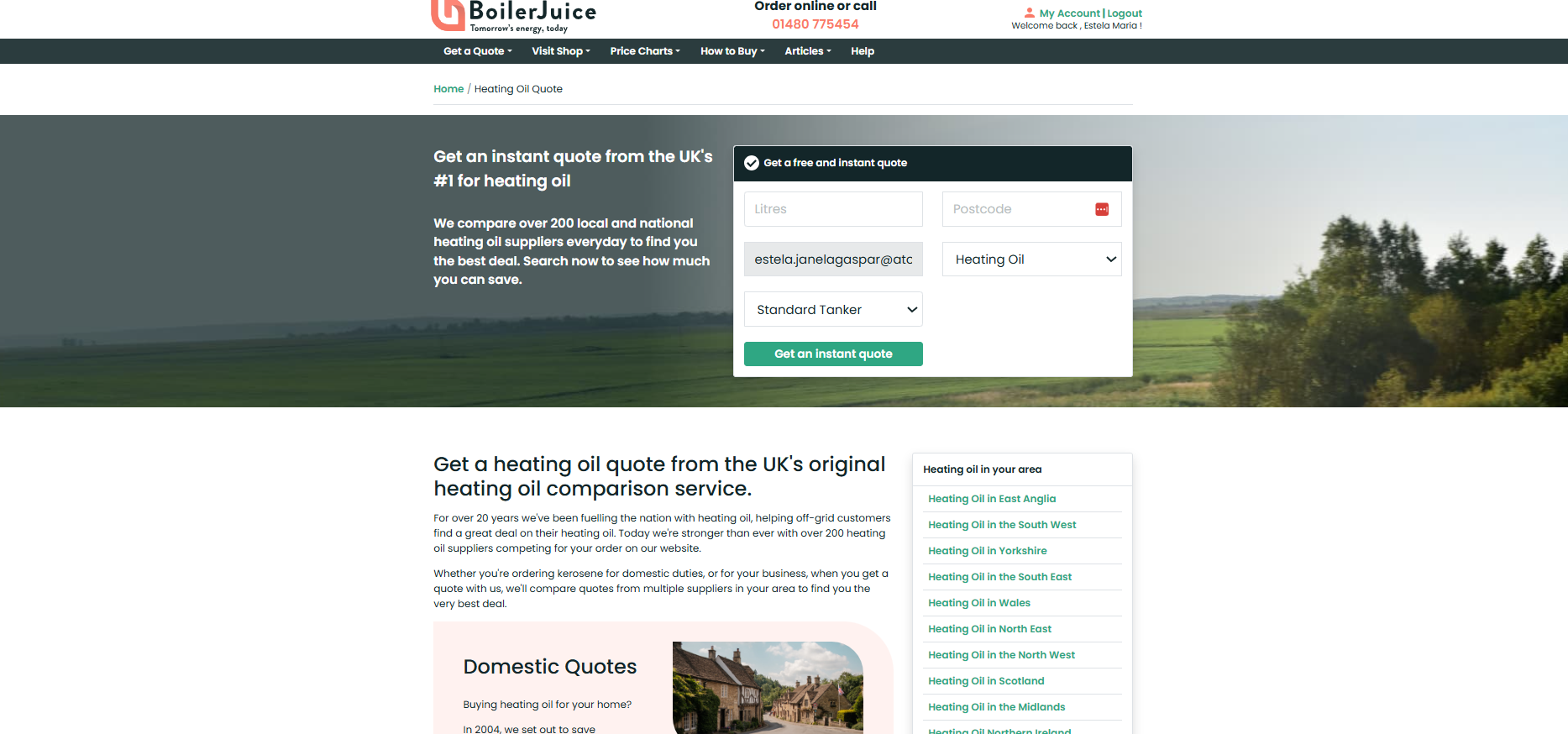
Screen 24
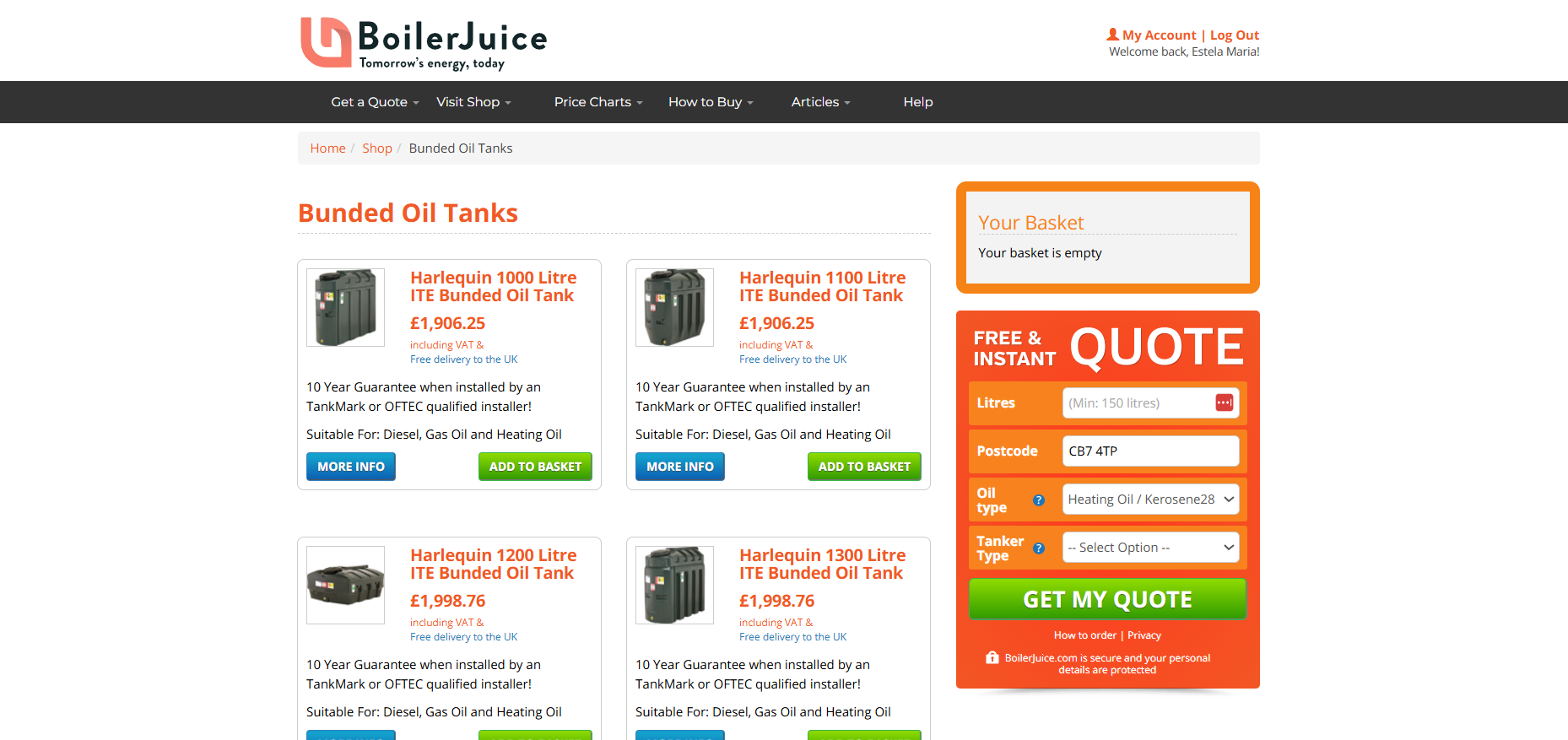
Screen 25
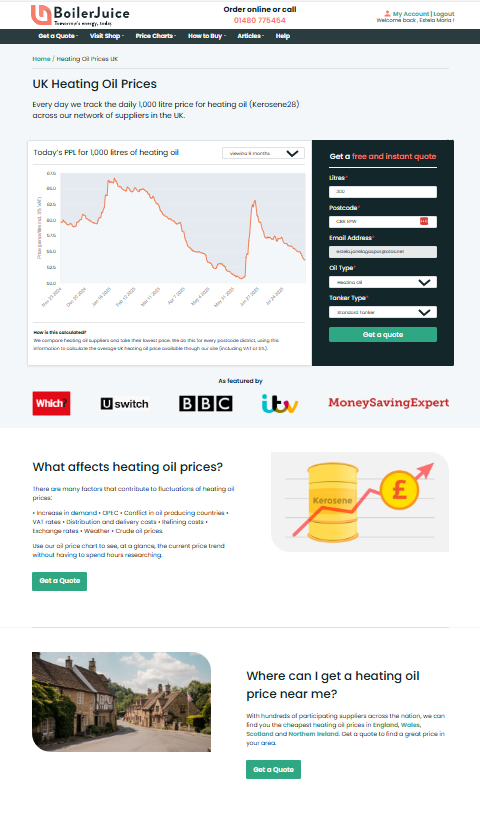
Screen 26
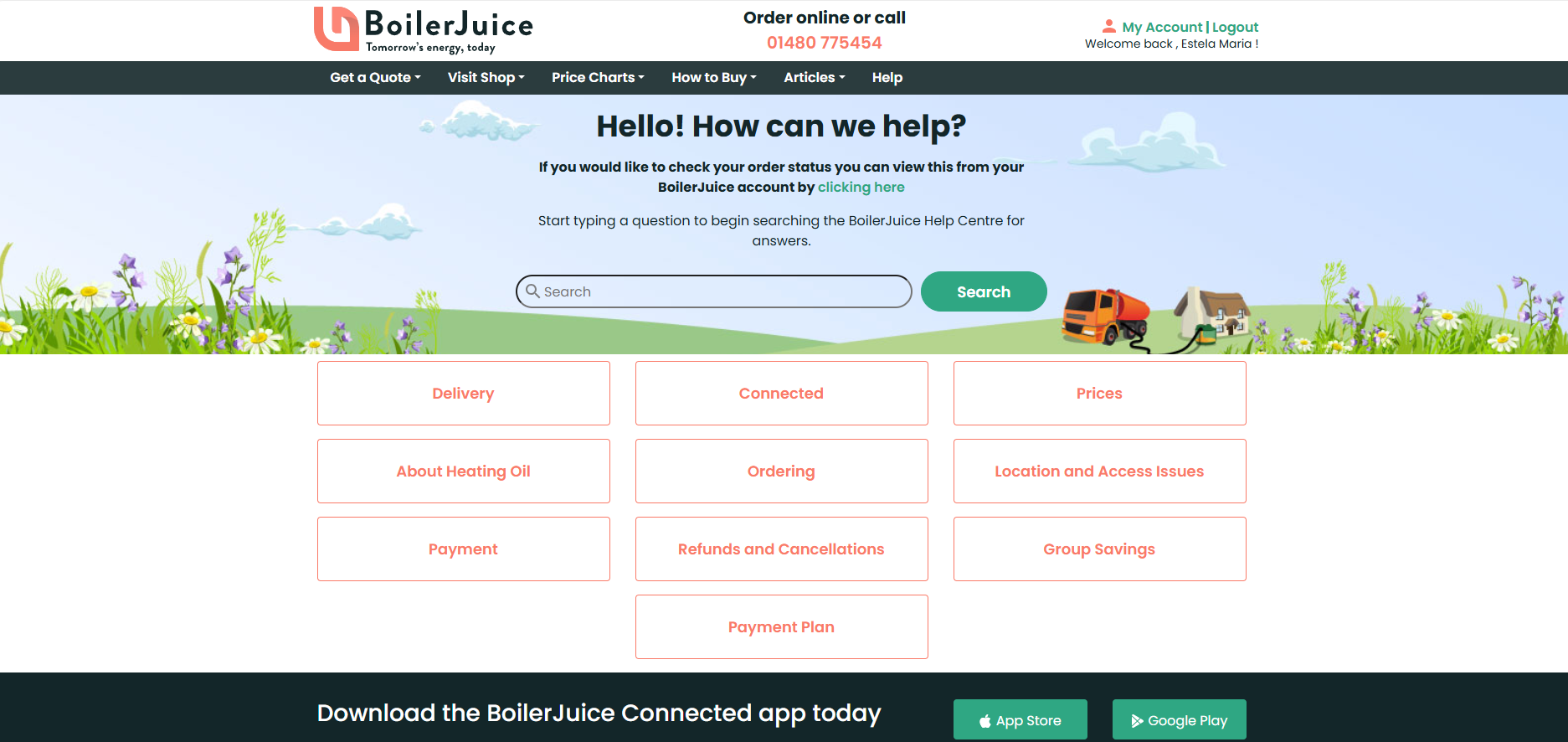
Reflection
Connecting live tank data to the digital journey transformed heating oil buying from a reactive, last-minute
scramble into a proactive,
planned experience. Real-time levels, clearer quotes, and tracked deliveries increased trust and pushed more
customers toward self-serve
behaviours. The omnichannel, accessible redesign reduced seasonal pressure on support, shifted conversations
from emergencies to follow-ups,
and created a foundation for retention through alerts and subscription-style ordering. In short: less panic,
more planning—and a service that finally felt as reliable as a utility.
- Real-time data & alerts made usage visible and actionable, reducing winter stress and stockouts.
- Price transparency and a streamlined quote-to-order flow improved confidence and conversion.
- Omnichannel consistency + accessibility widened reach and simplified repeat ordering.
- Cross-functional delivery (engineering, CS, suppliers) turned UX changes into service innovation.